Mini Metric Olympics Activity
This blog post contains Amazon affiliate links. As an Amazon Associate, I earn a small commission from qualifying purchases.
To wrap up my physical science students’ “I can take accurate measurements” skill, I decided to use the “Mini Metric Olympics” Activity from AIMS. The original activity was published in Math + Science: A Solution. This book is available to check out from the Internet Archive’s Online Lending Library for free for an hour at a time.
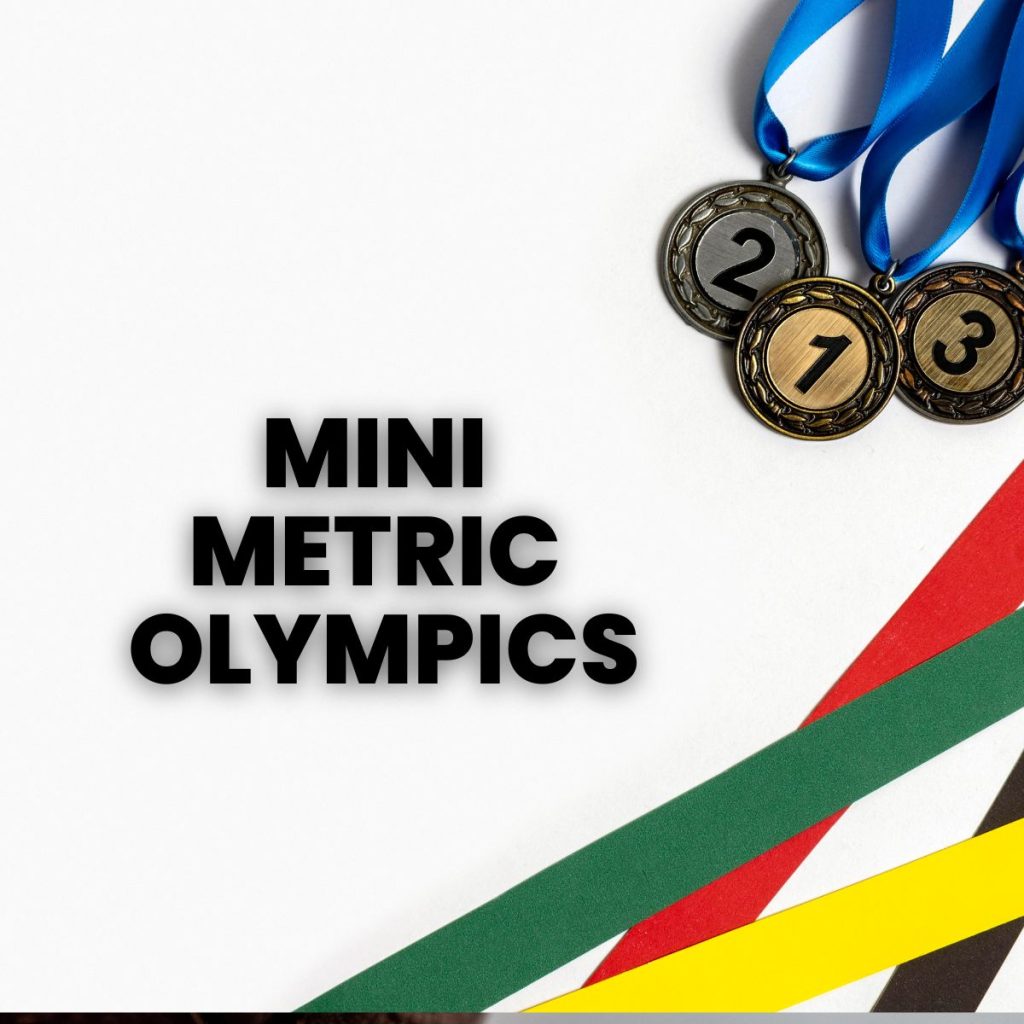
I originally found this mini metric olympics activity online here. The original activity is from 1987 and is hand-lettered. I decided to modify it and update it a bit at the same time.
I created this score sheet for each of my students to fill out as they participated in the mini metric olympics.
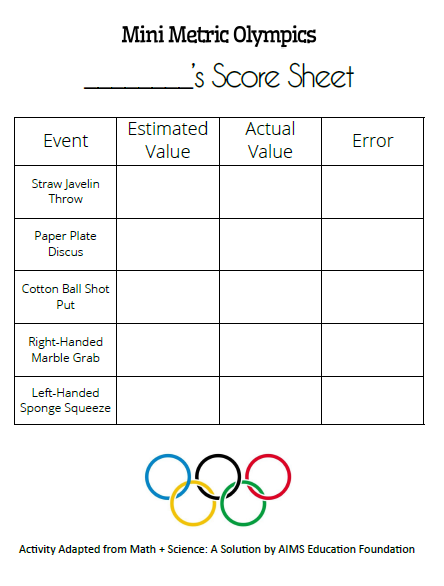
The original AIMS version had 6 events, but I chose to focus on only 5 events. I deleted the event that required my students to take their shoes off. I have trouble enough keeping my room smelling nice when their shoes are on!
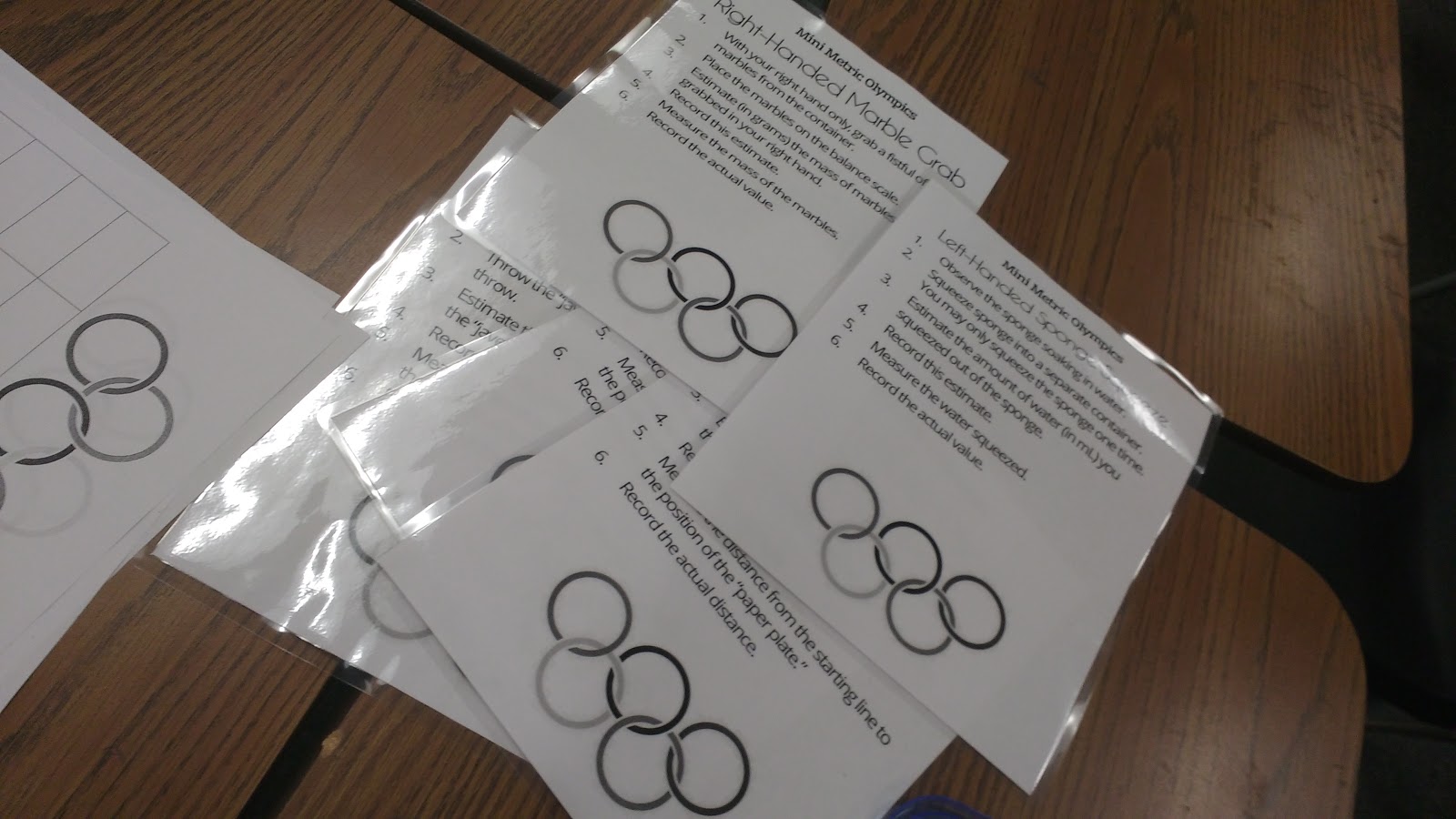
I laminated the instructions for each station:
MATH = LOVE RECOMMENDS…

A laminator is a MUST-HAVE for me as a math teacher! I spent my first six years as a teacher at a school with a broken laminator, so I had to find a way to laminate things myself.
I’ve had several laminators over the years. I currently use a Scotch laminator at home and a Swingline laminator at school.
I highly recommend splurging a bit on the actual laminator and buying the cheapest laminating pouches you can find!
Here are the details for the five events I chose.
Straw Javelin Throw:
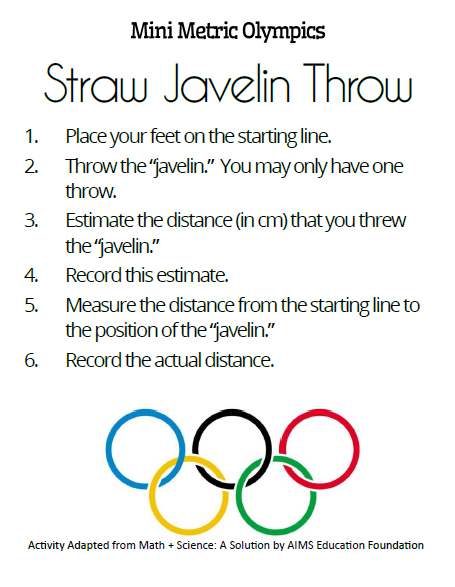
Paper Plate Discus:
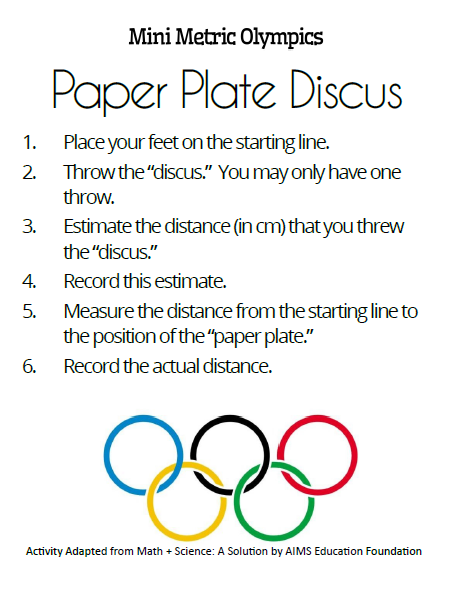
Cotton Ball Shot Put:
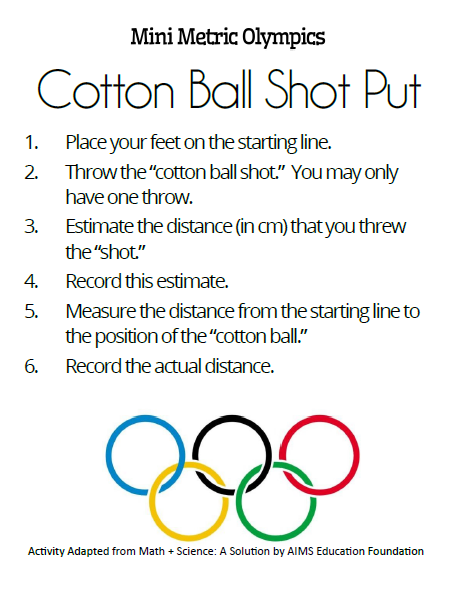
Right-Handed Marble Grab:
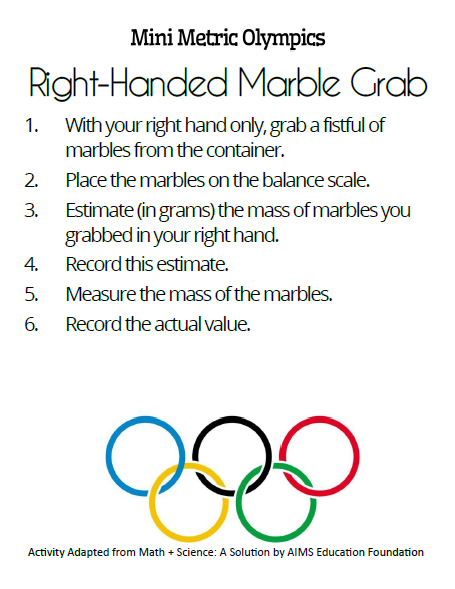
Left-Handed Sponge Squeeze:
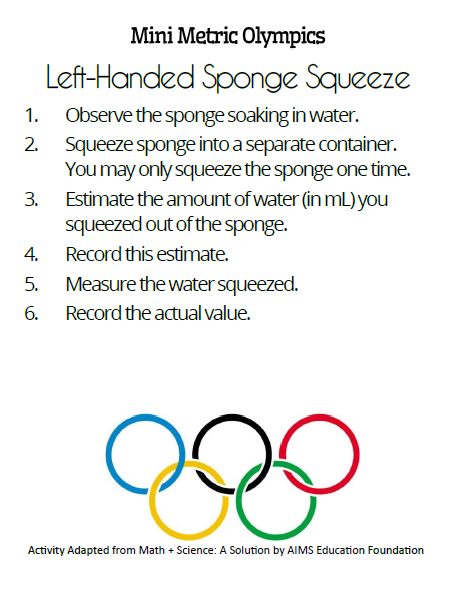
What I absolutely love about these activities is that they were perfectly do-able in my non-science lab classroom. Though, the back counter in my classroom is looking more and more like a science lab!
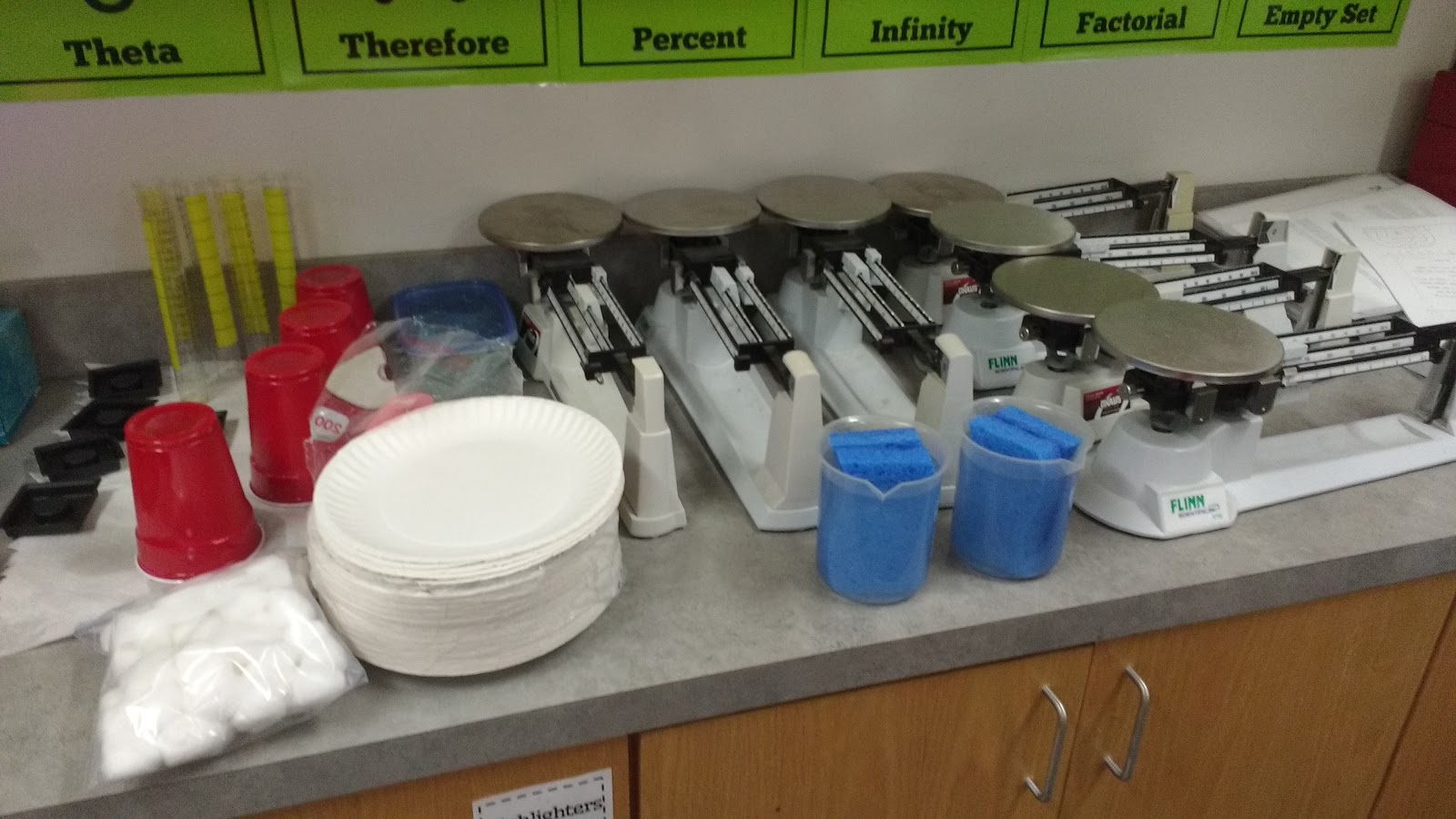
Instead of marbles, I used these decorative glass pieces from my husband’s classroom. He bought them at Dollar Tree to use as counters in activities.
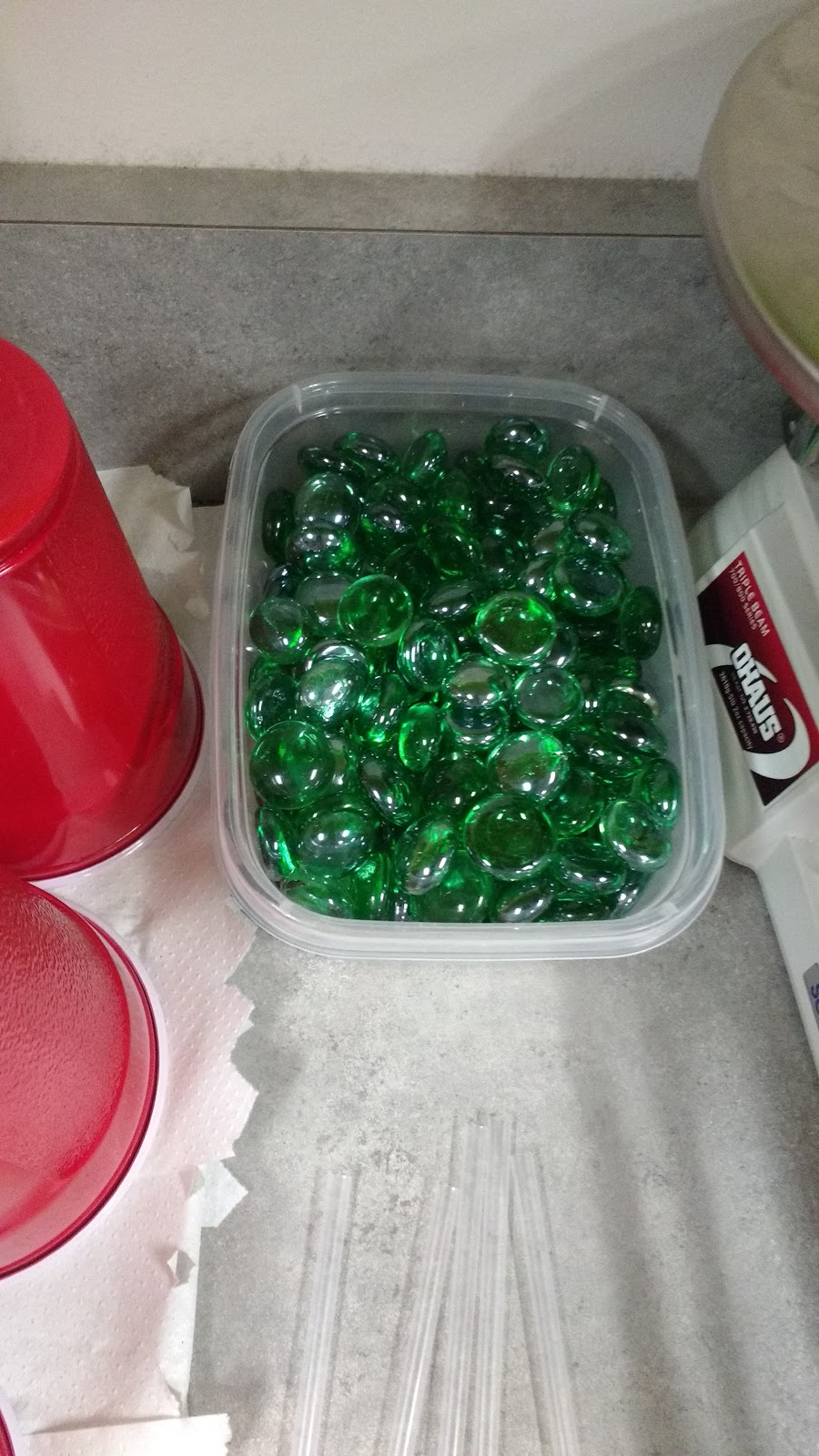
The graduated cylinders I received from the OERB Workshop I attended came in super handy for the left-handed sponge squeeze. I had them squeeze their sponge into the red cup, estimate the volume, then pour the water into the graduated cylinder.
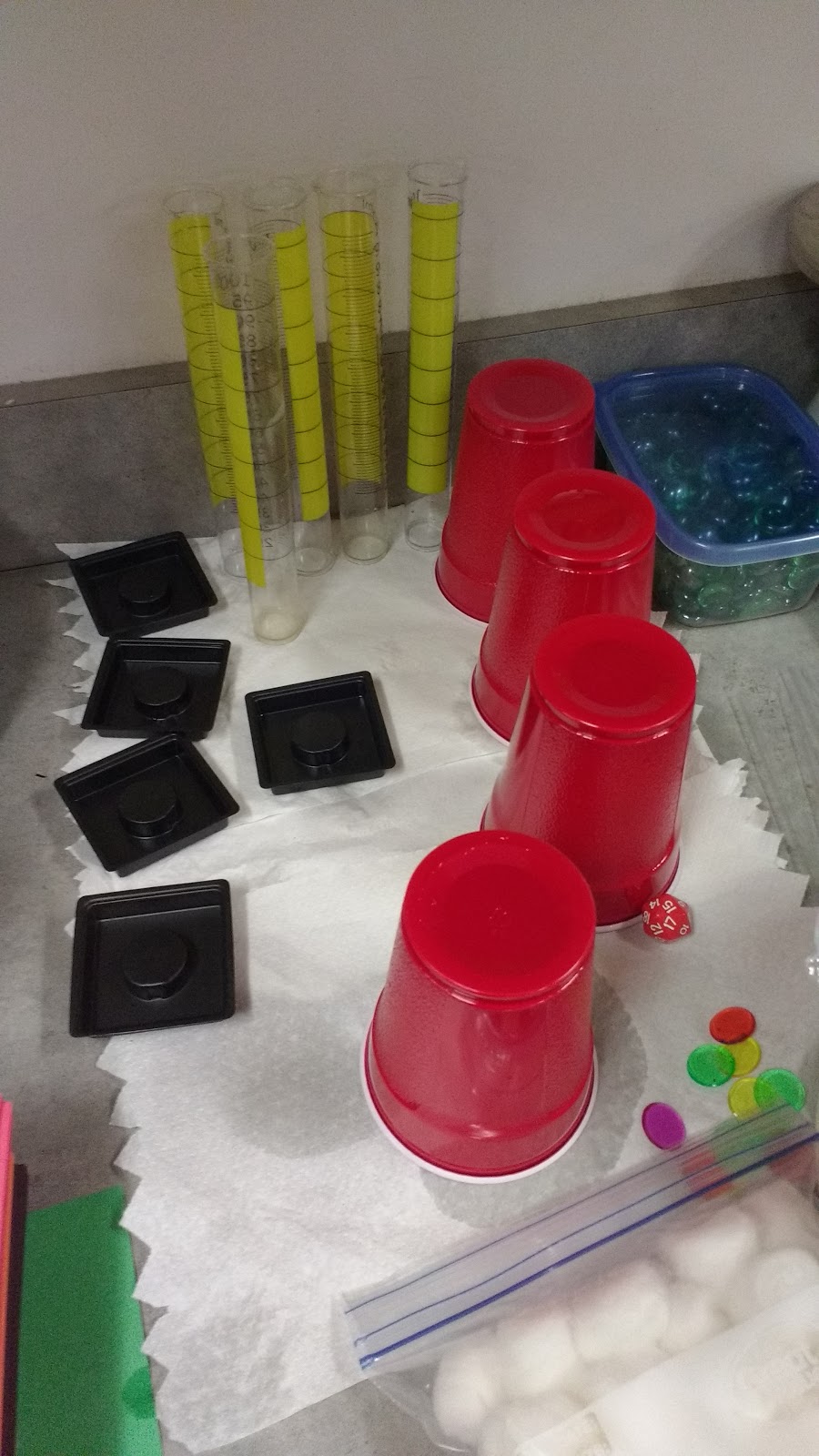
Now, I want to share some photos of my students in action as they completed the five events. We did the right-handed marble grab and the left-handed sponge squeeze in our classroom since that’s where the triple beam balances and the graduated cylinders were. The other three events all involved measuring with meter sticks, so we went out into the lobby area of the school to spread out and collect our data.
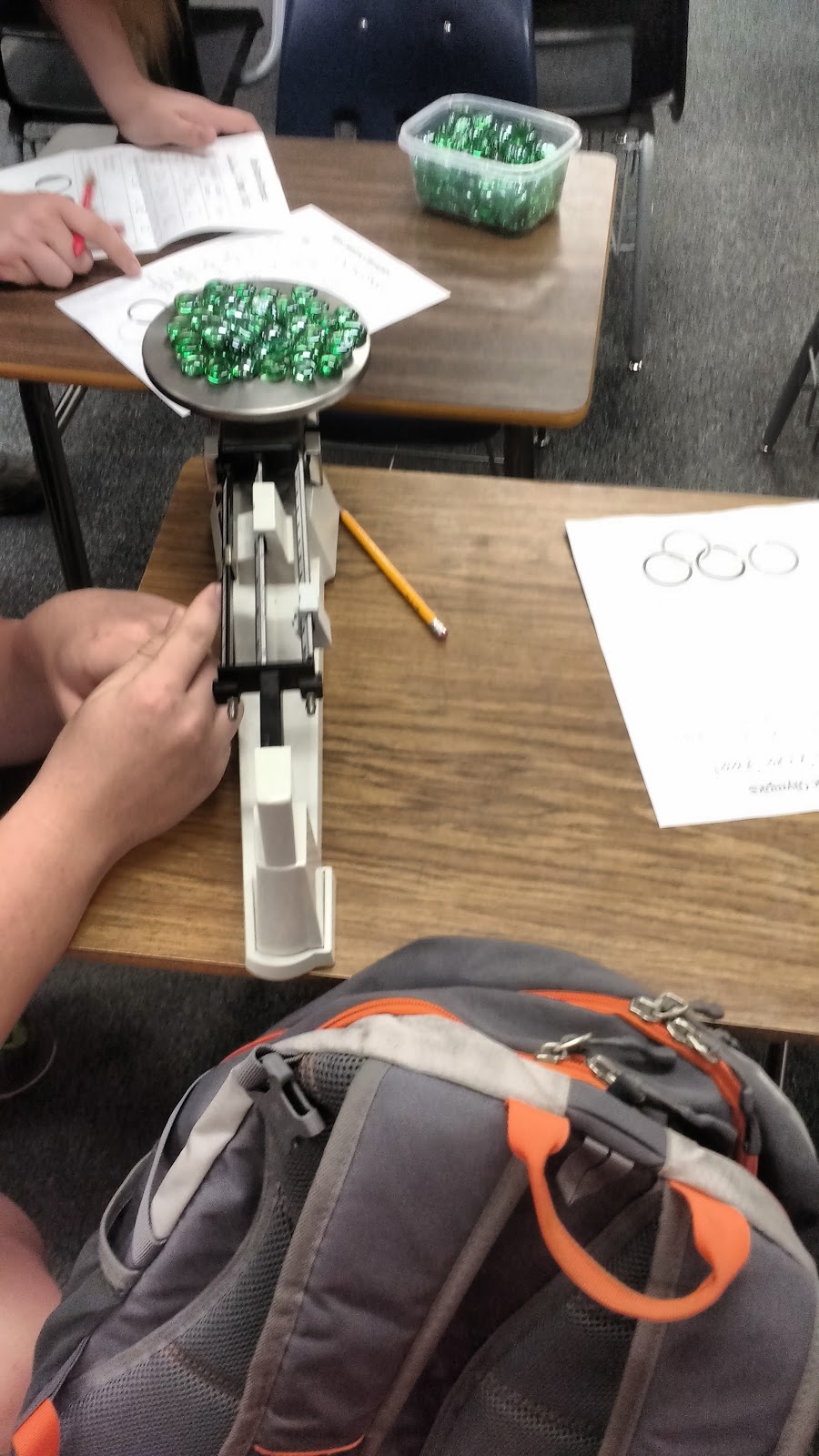
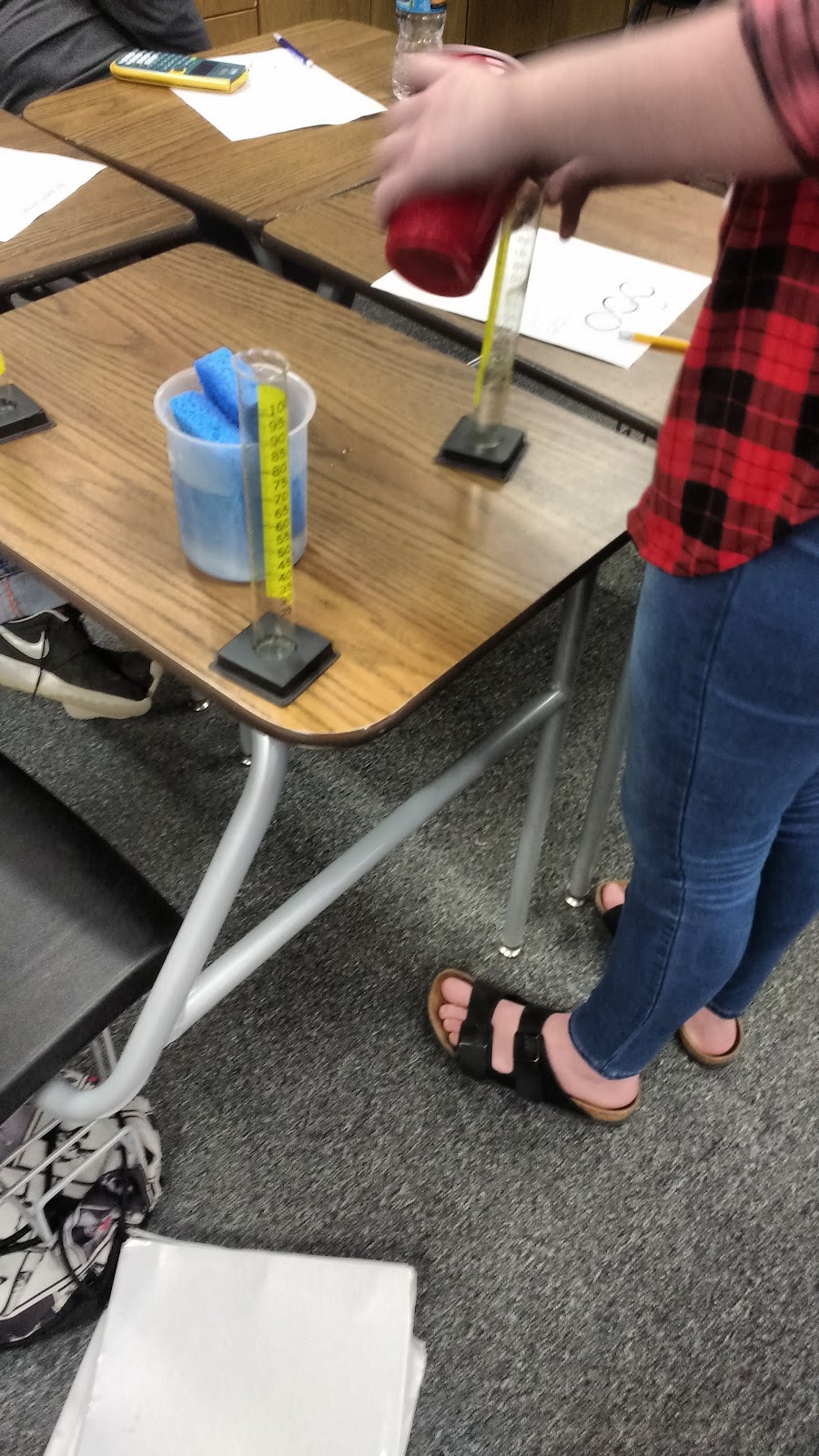
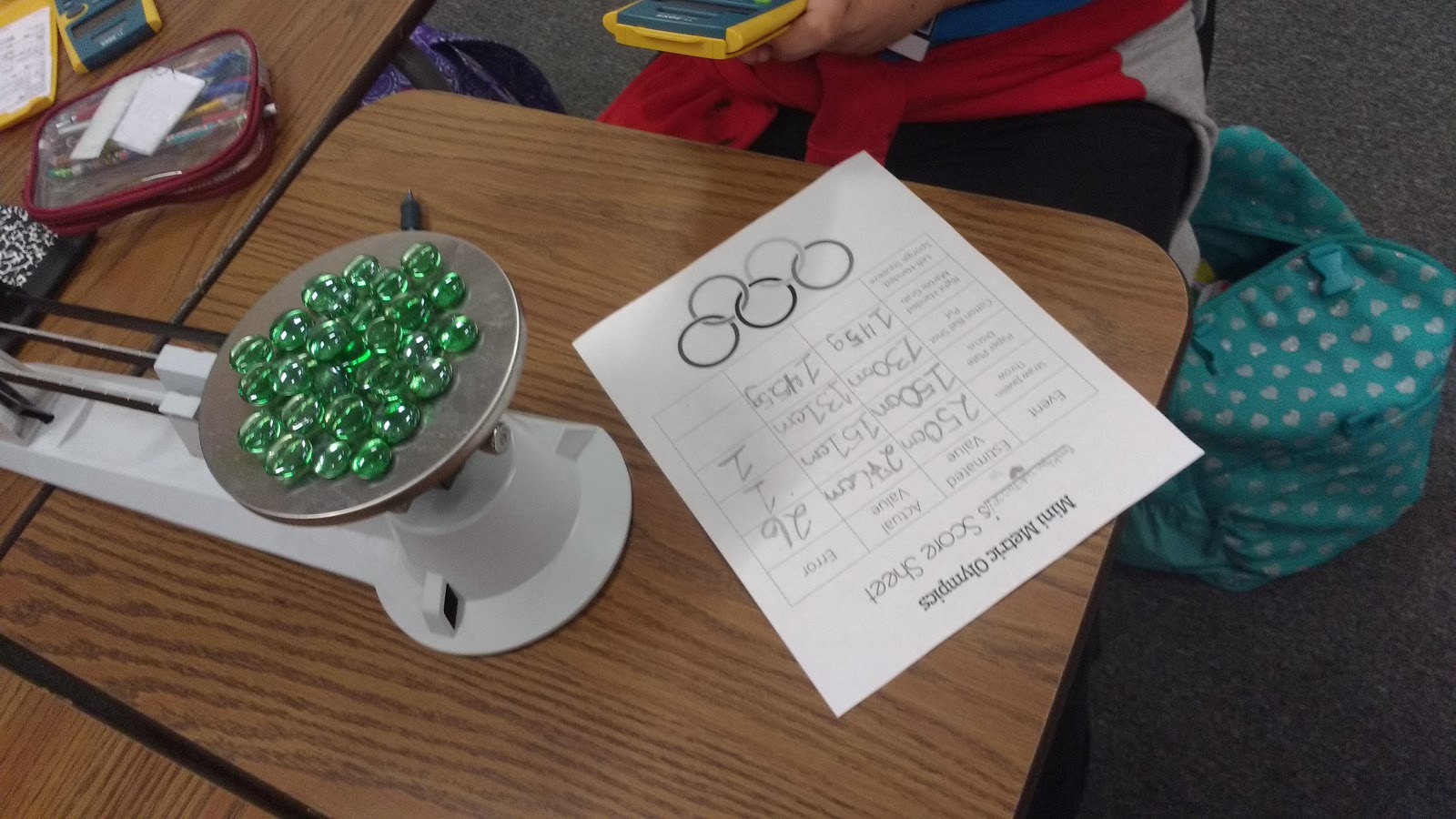
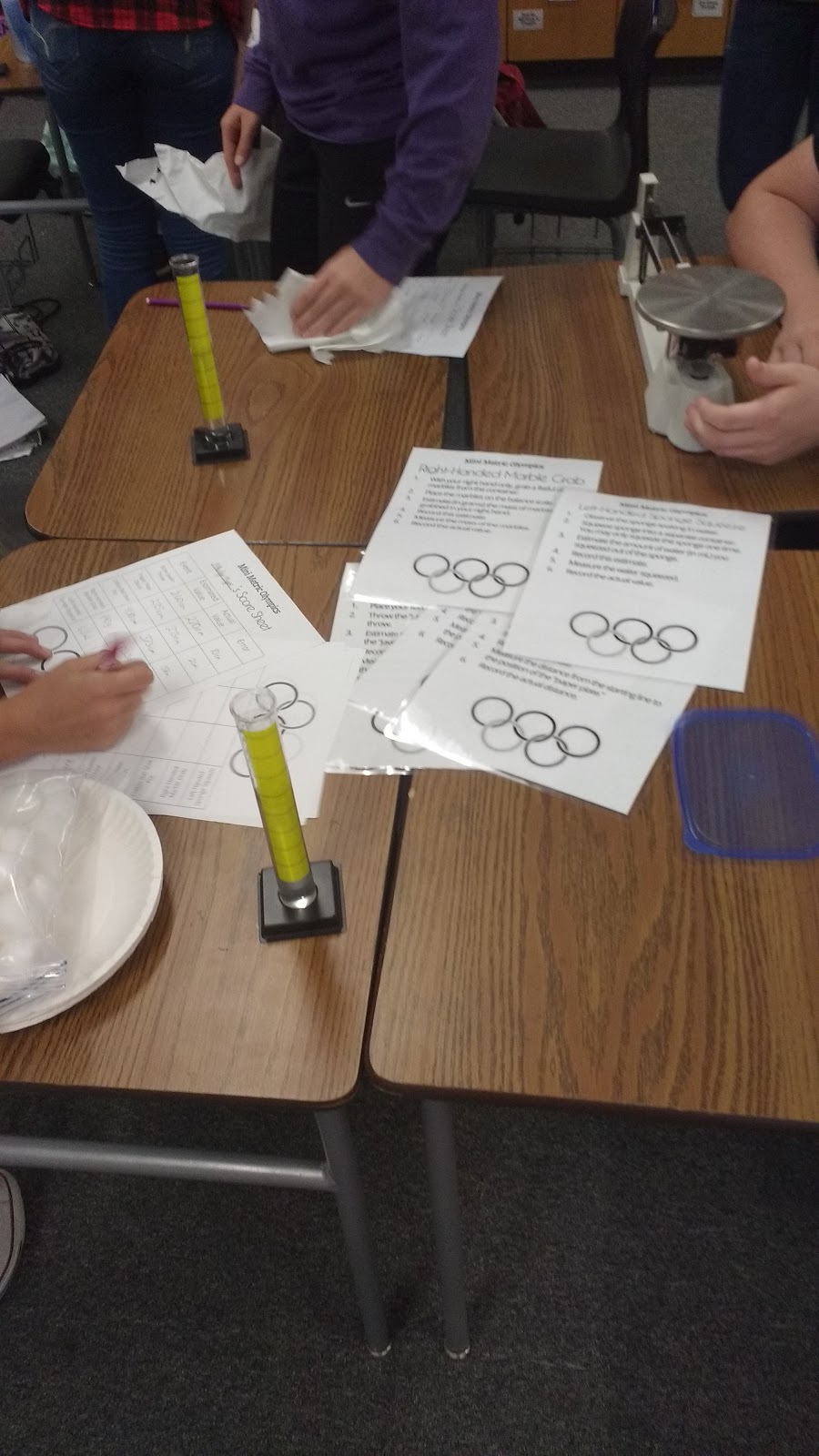
Thankfully, water cleans up easily!
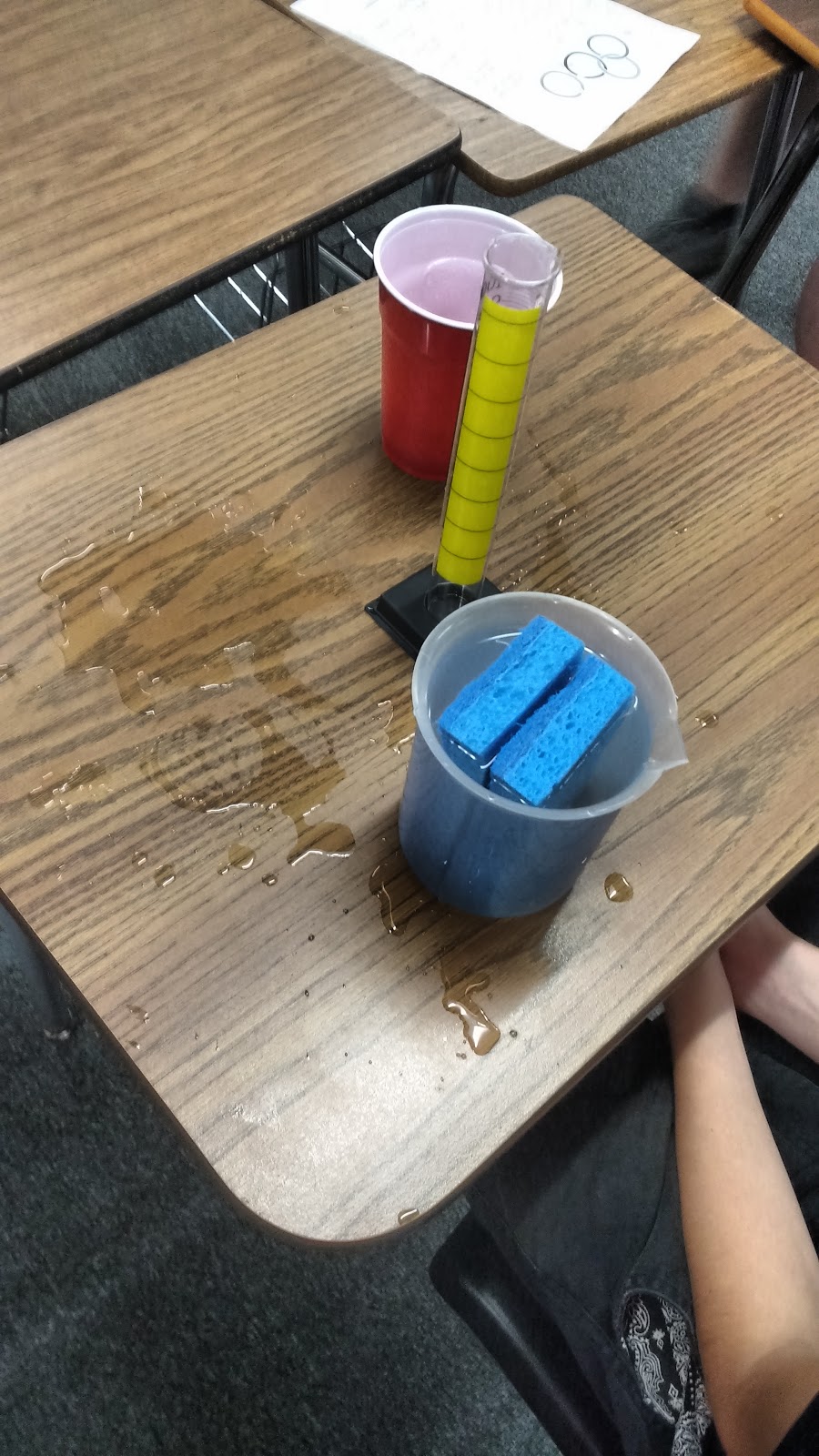
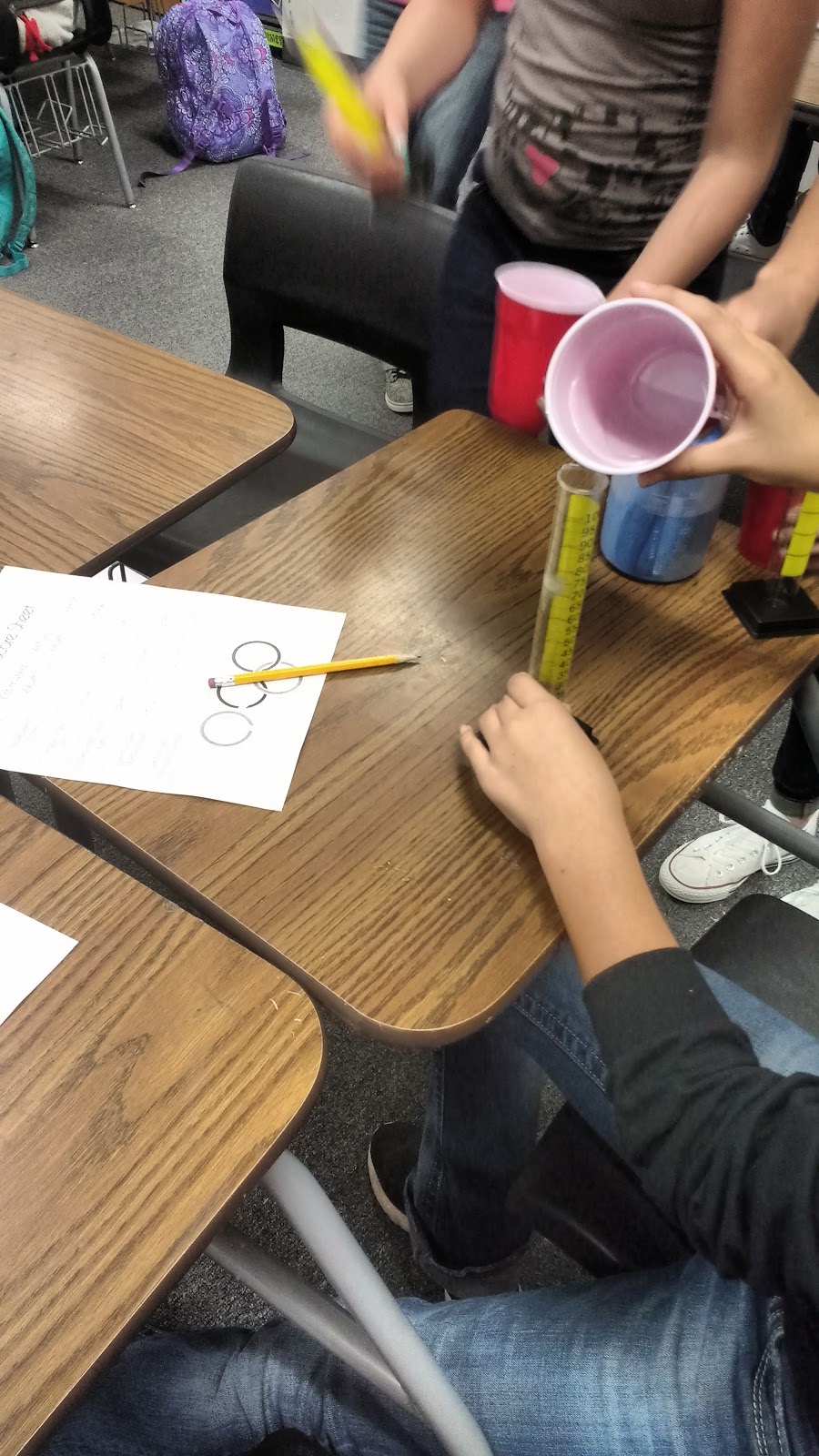
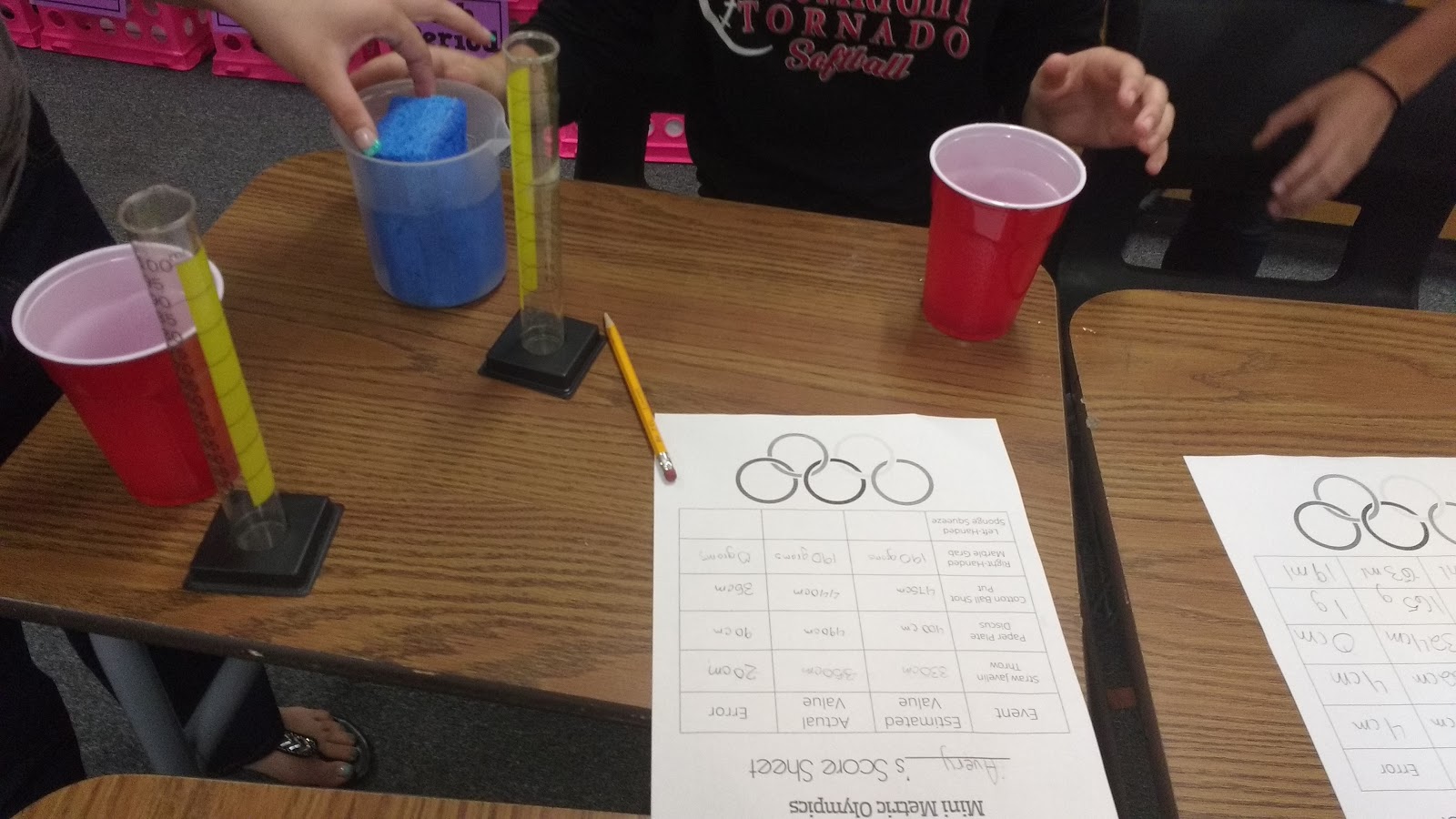
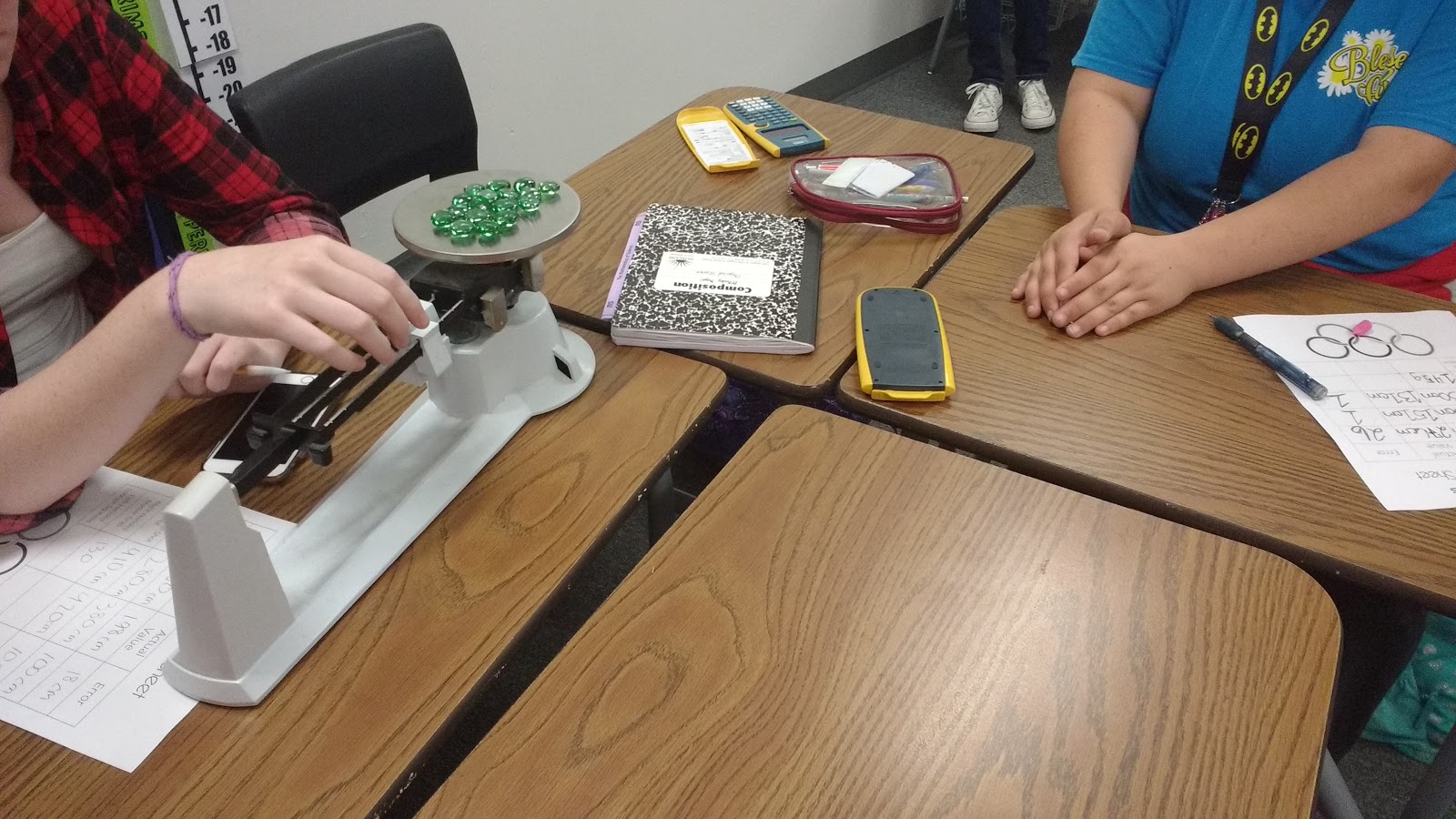
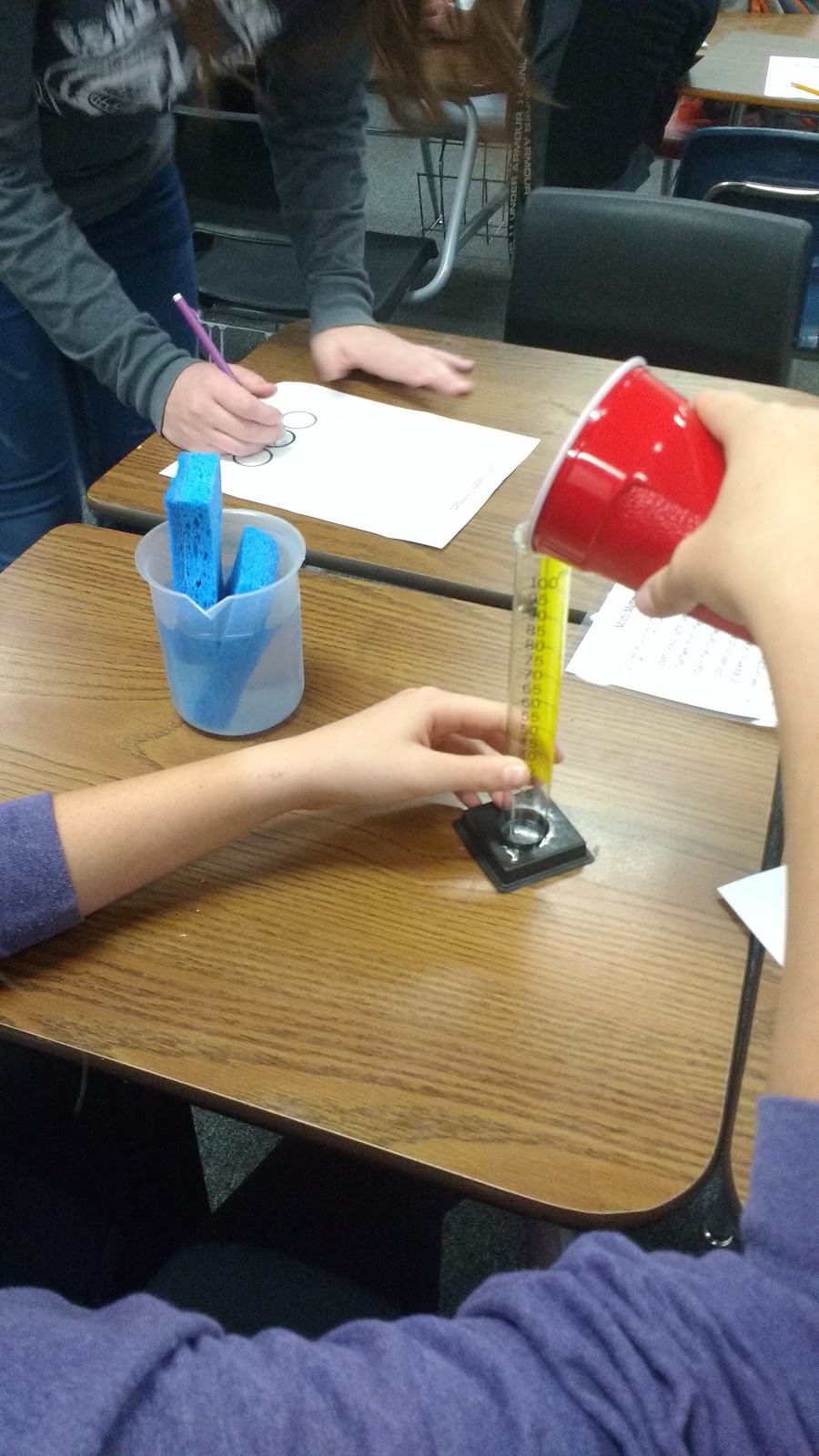
Looking at this photo, I now realize that not all of my students used their left hands for the sponge squeeze…
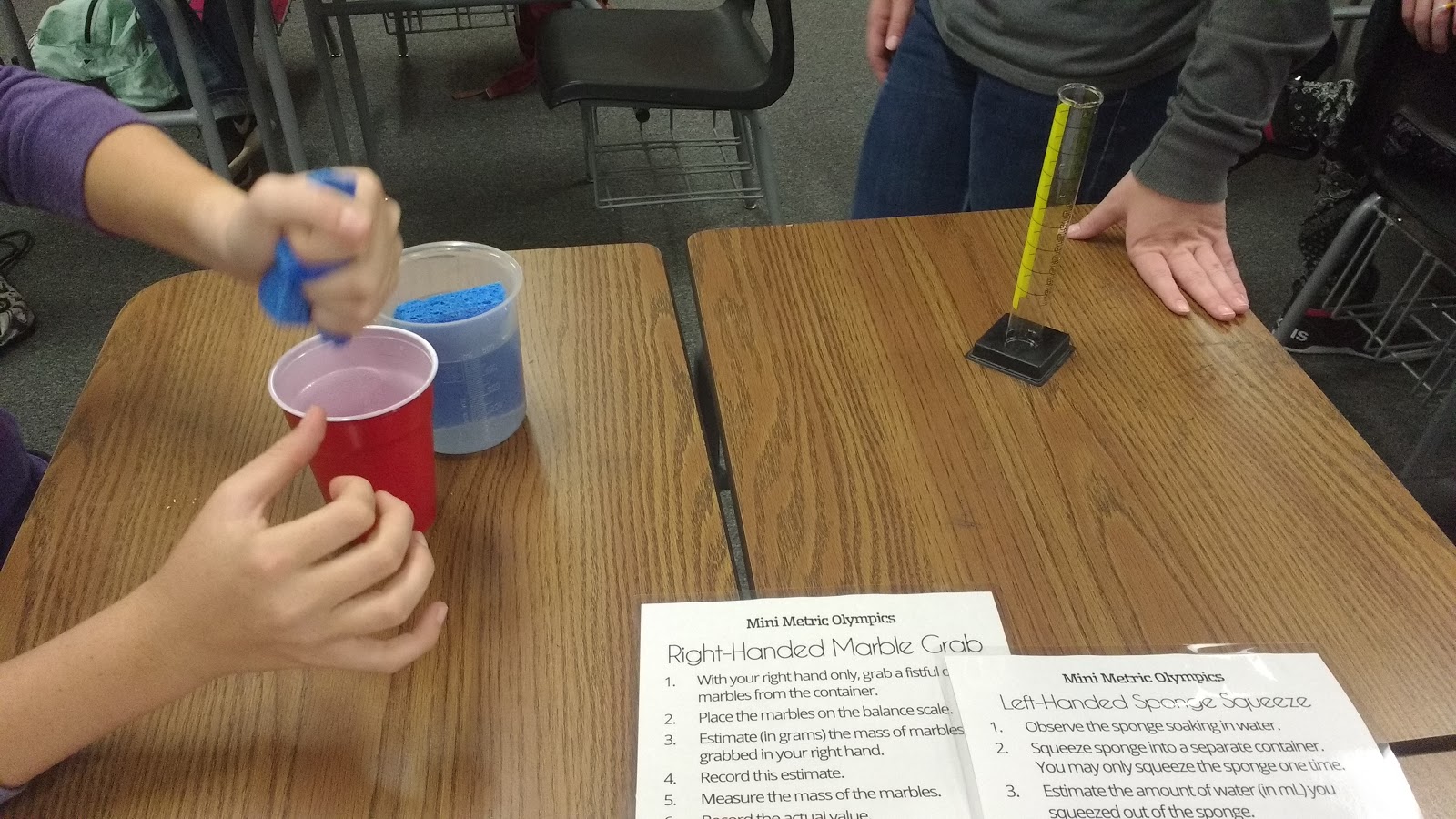
This next picture has a story. It was taken out in the school’s lobby as students were cleaning up our materials from the three events we did out there. One student collected all the meter sticks and put them in this pile. Then, at the EXACT moment that the district superintendent was walking by, a student said very loudly, “Why is one of out meter sticks shorter than all the others?” The superintendent looked at her and said, “That’s because that’s a yard stick, not a meter stick.” Now my superintendent is probably wondering if I’ve taught these children anything…
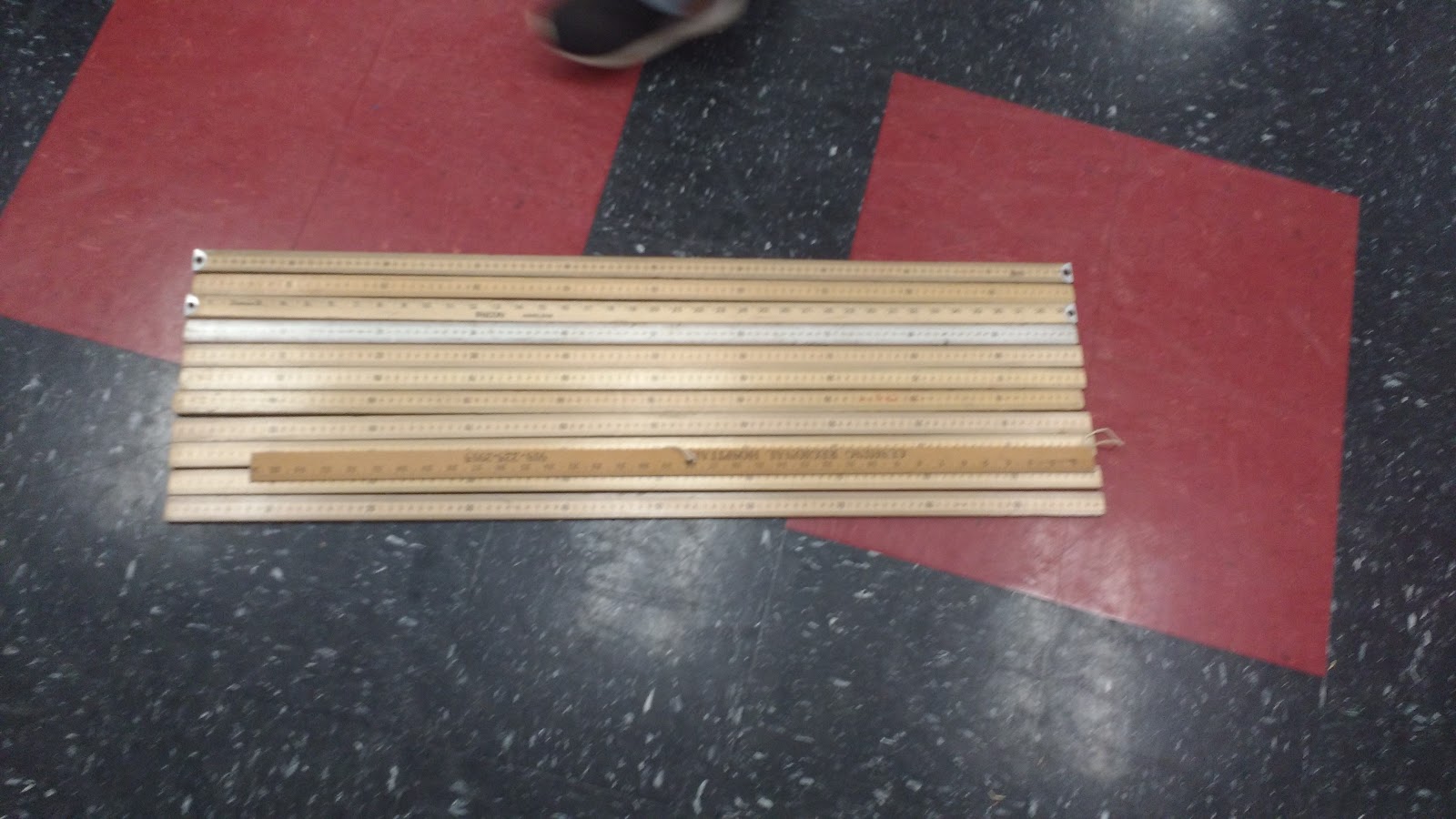
The best way to describe doing the three measurement events in the lobby would be this: “mass chaos.” But, everyone did get their measurements done!
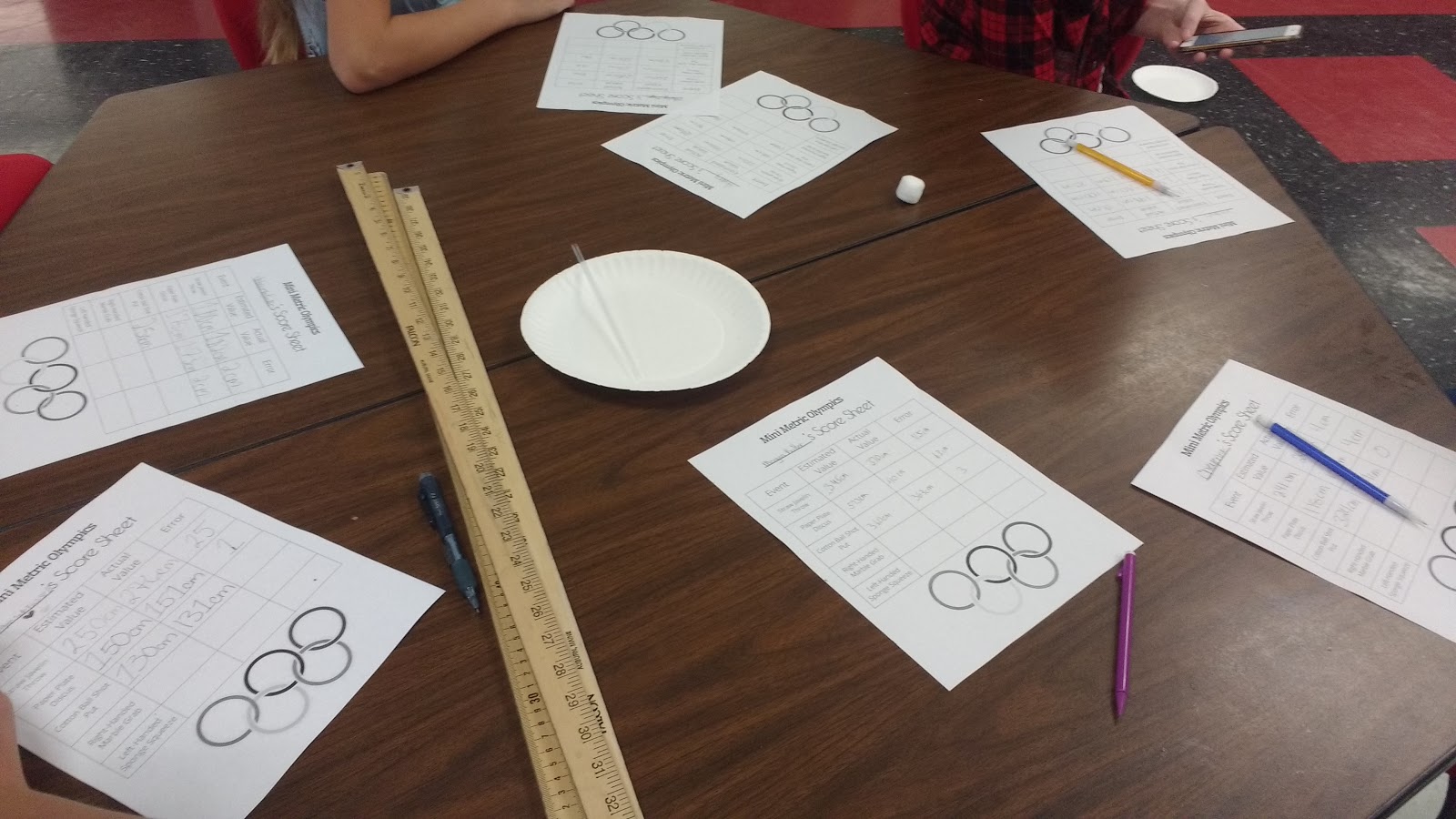
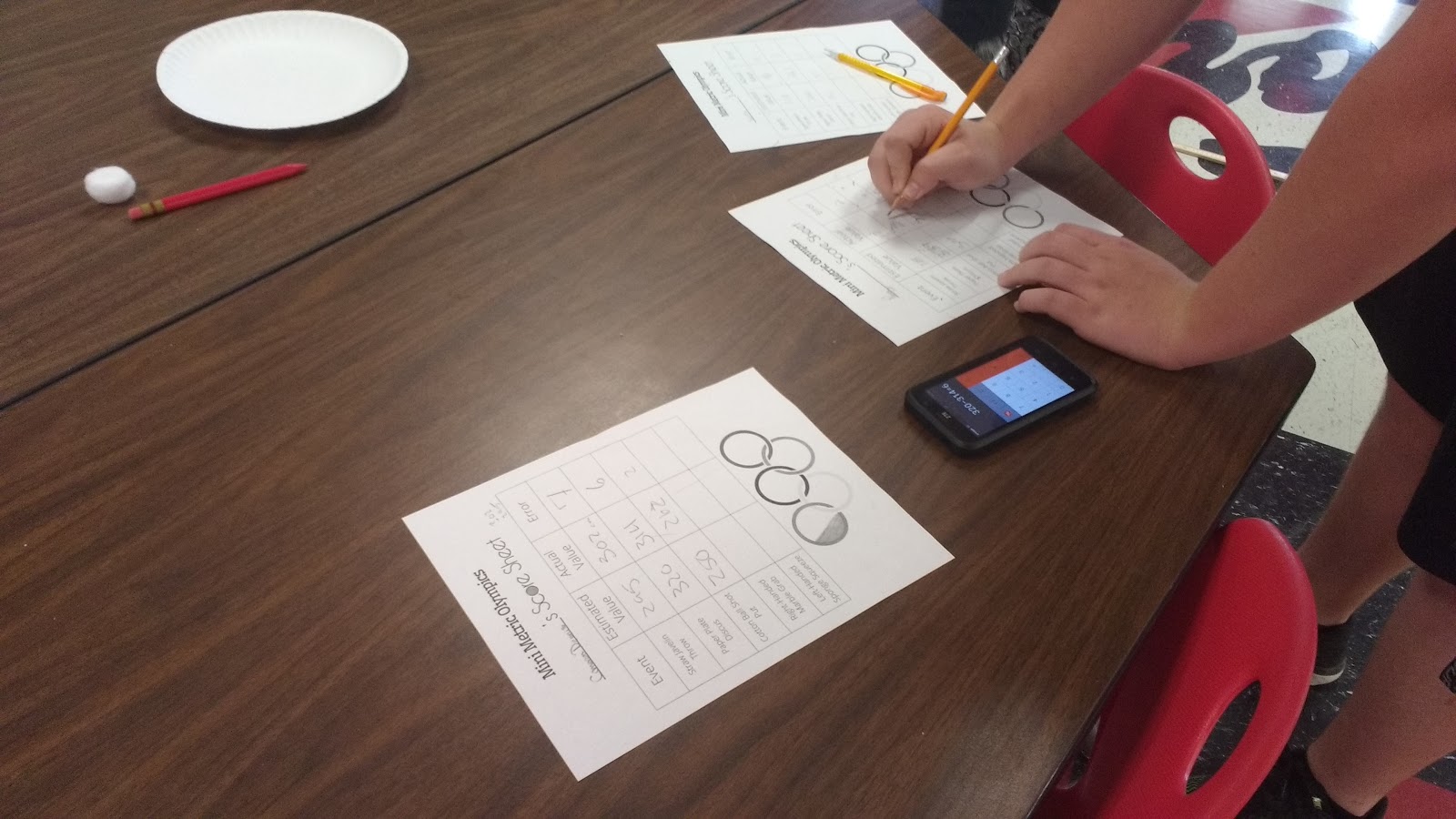
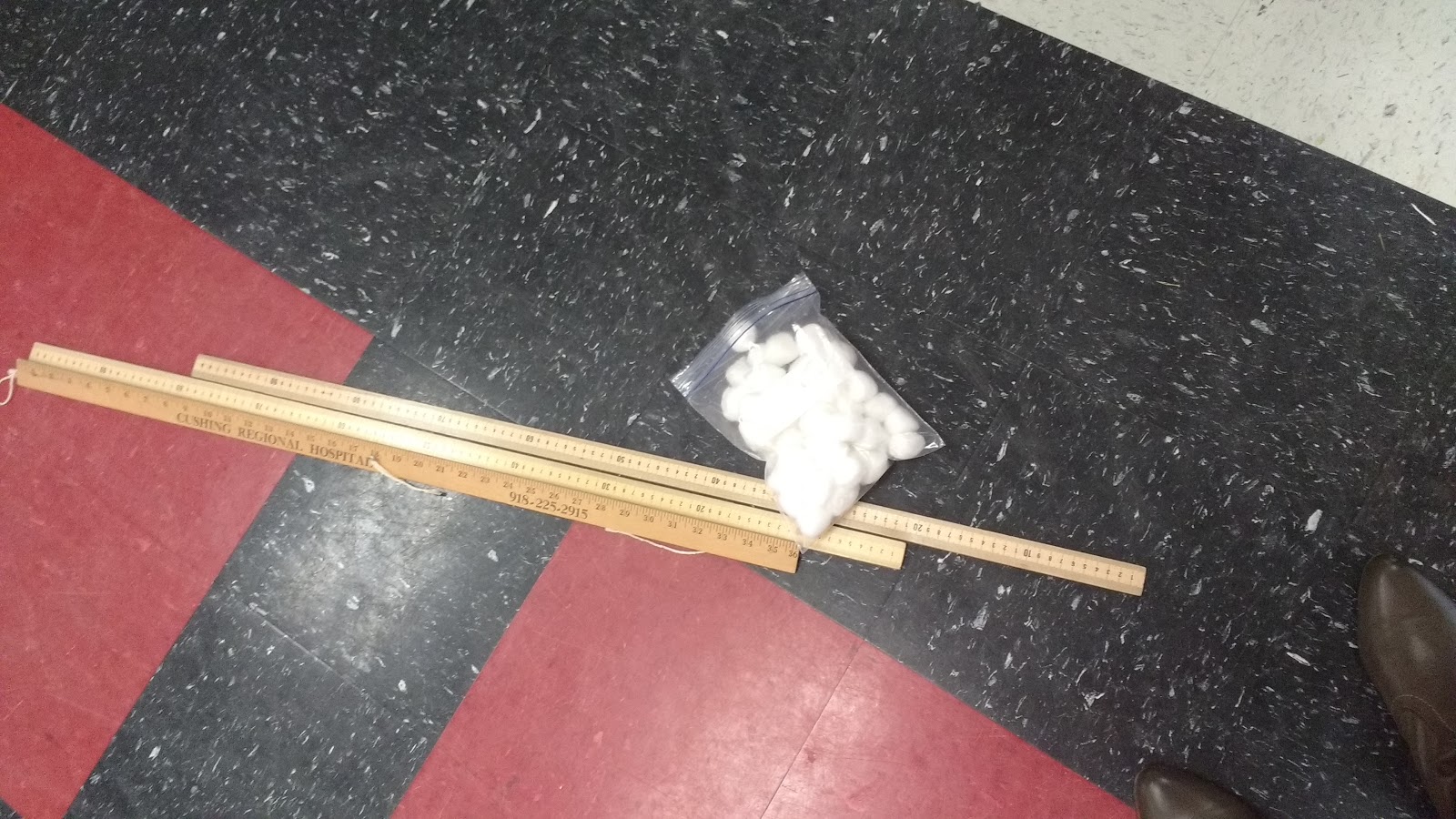
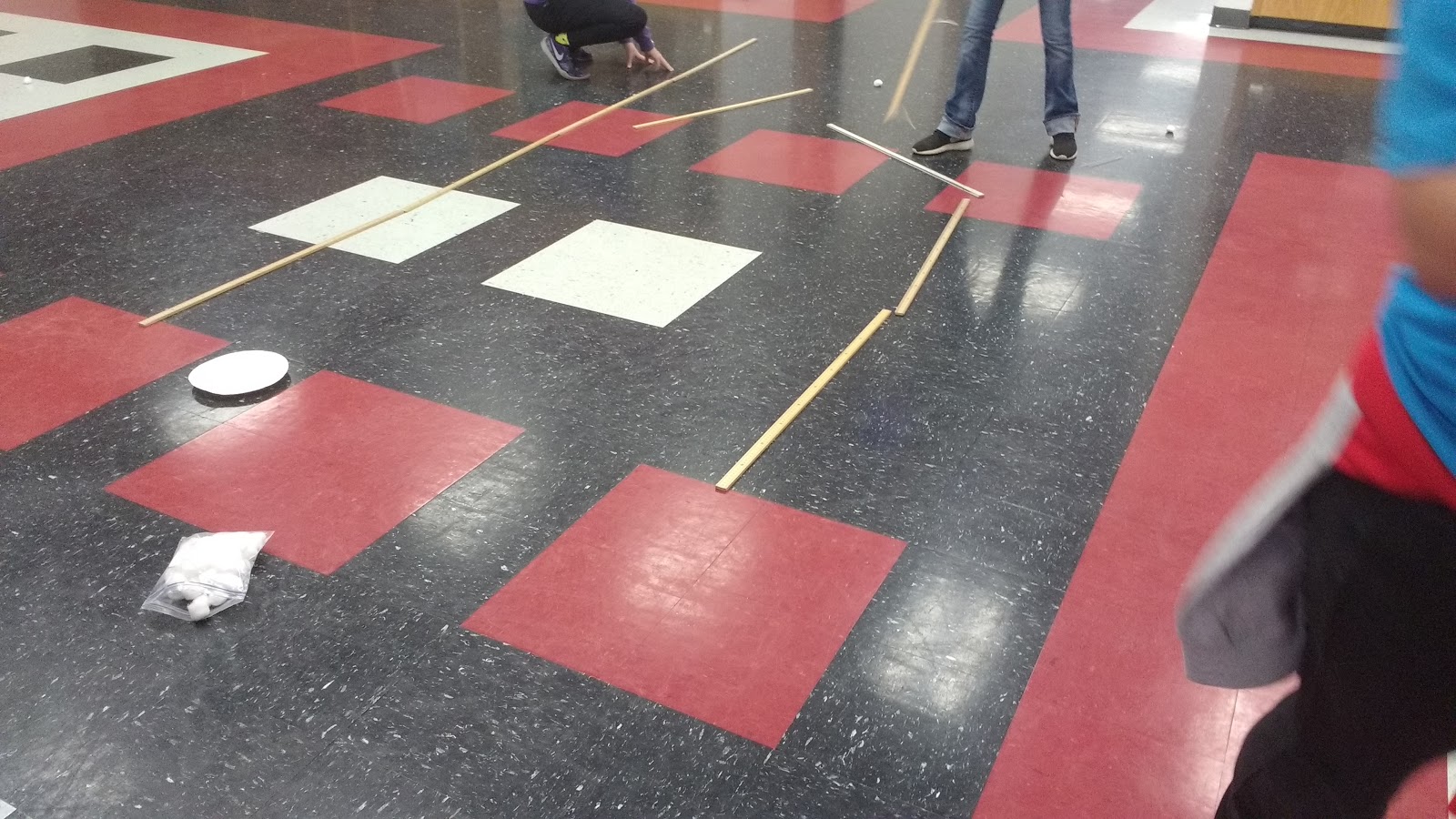
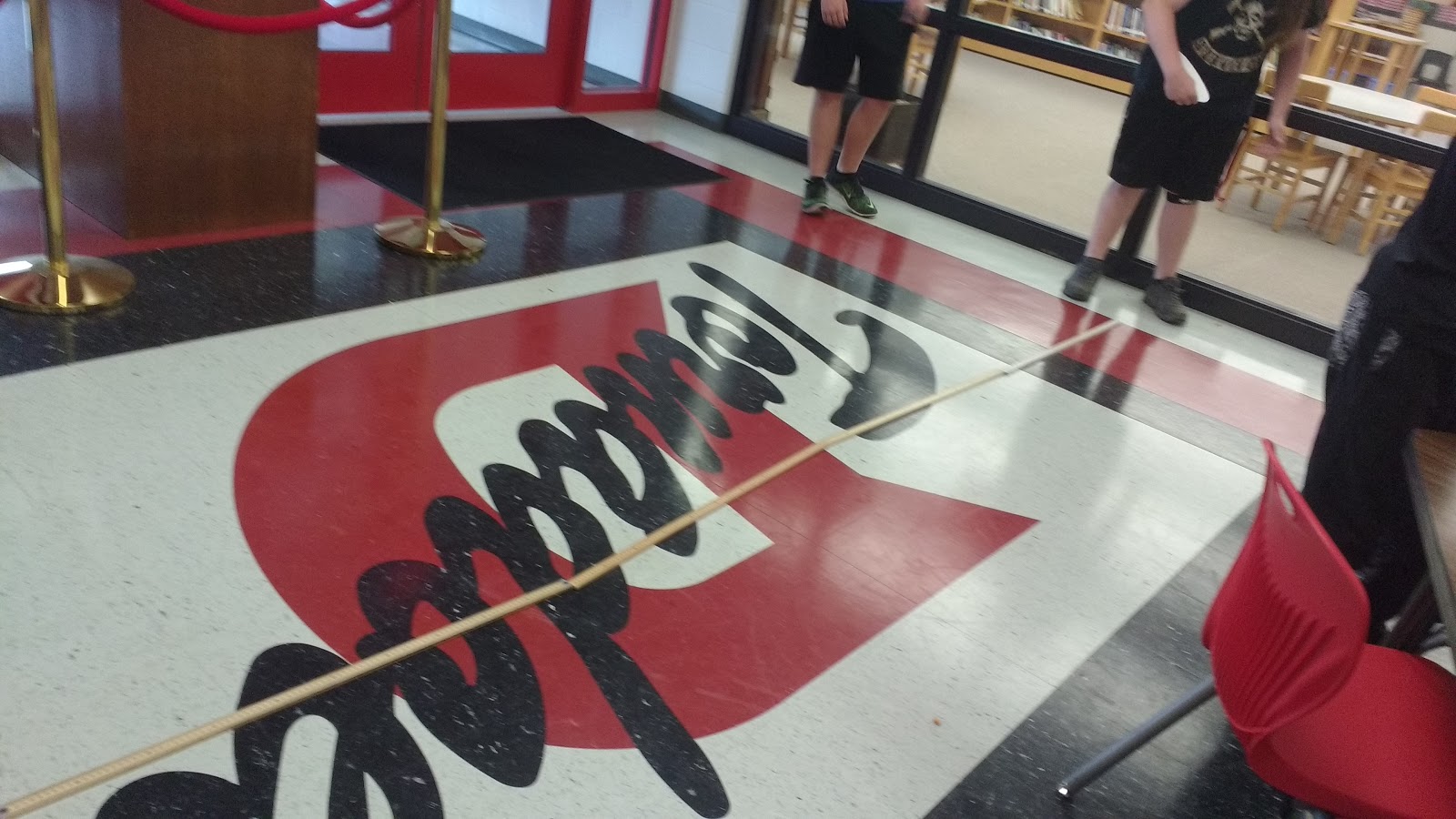
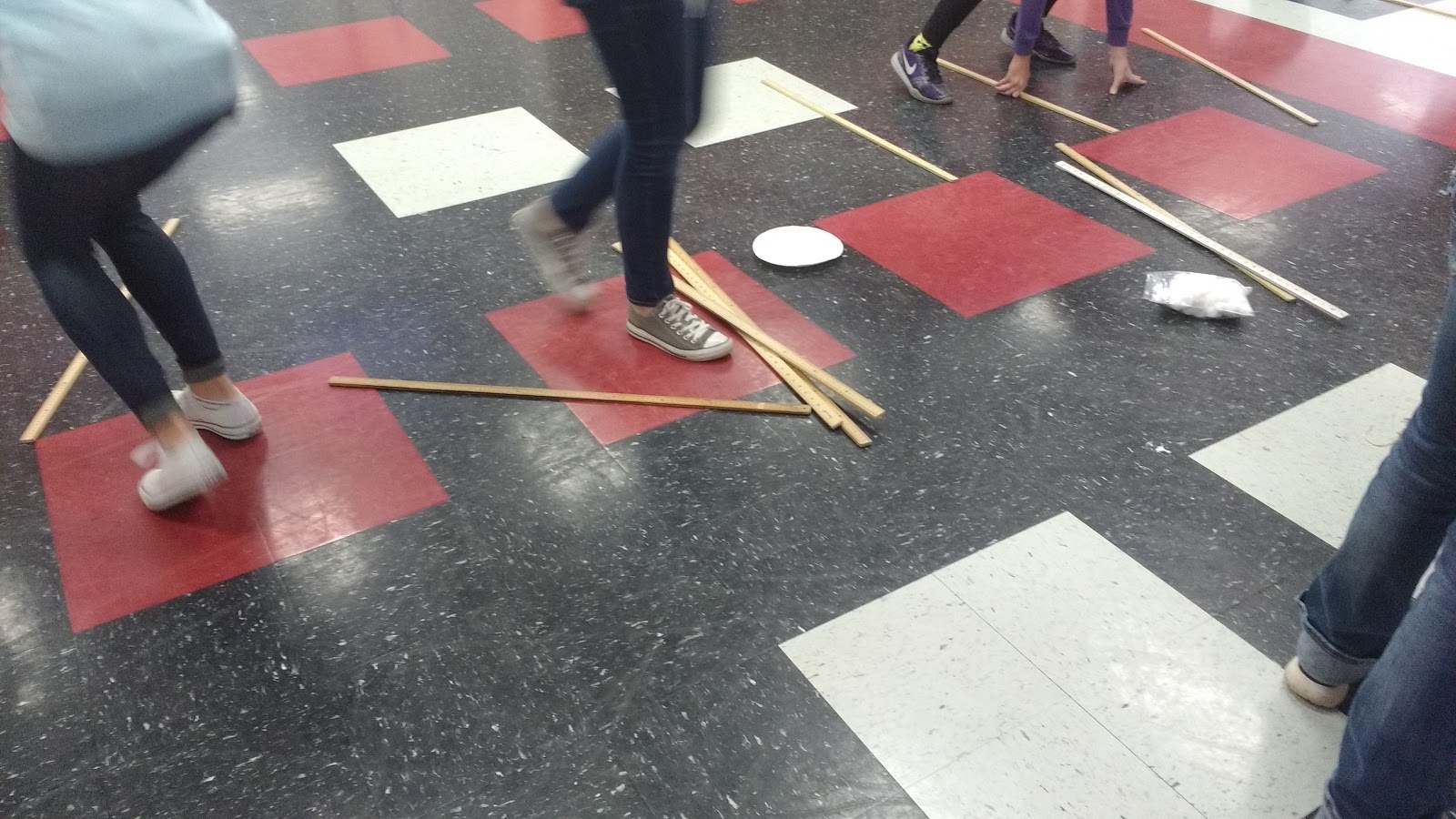
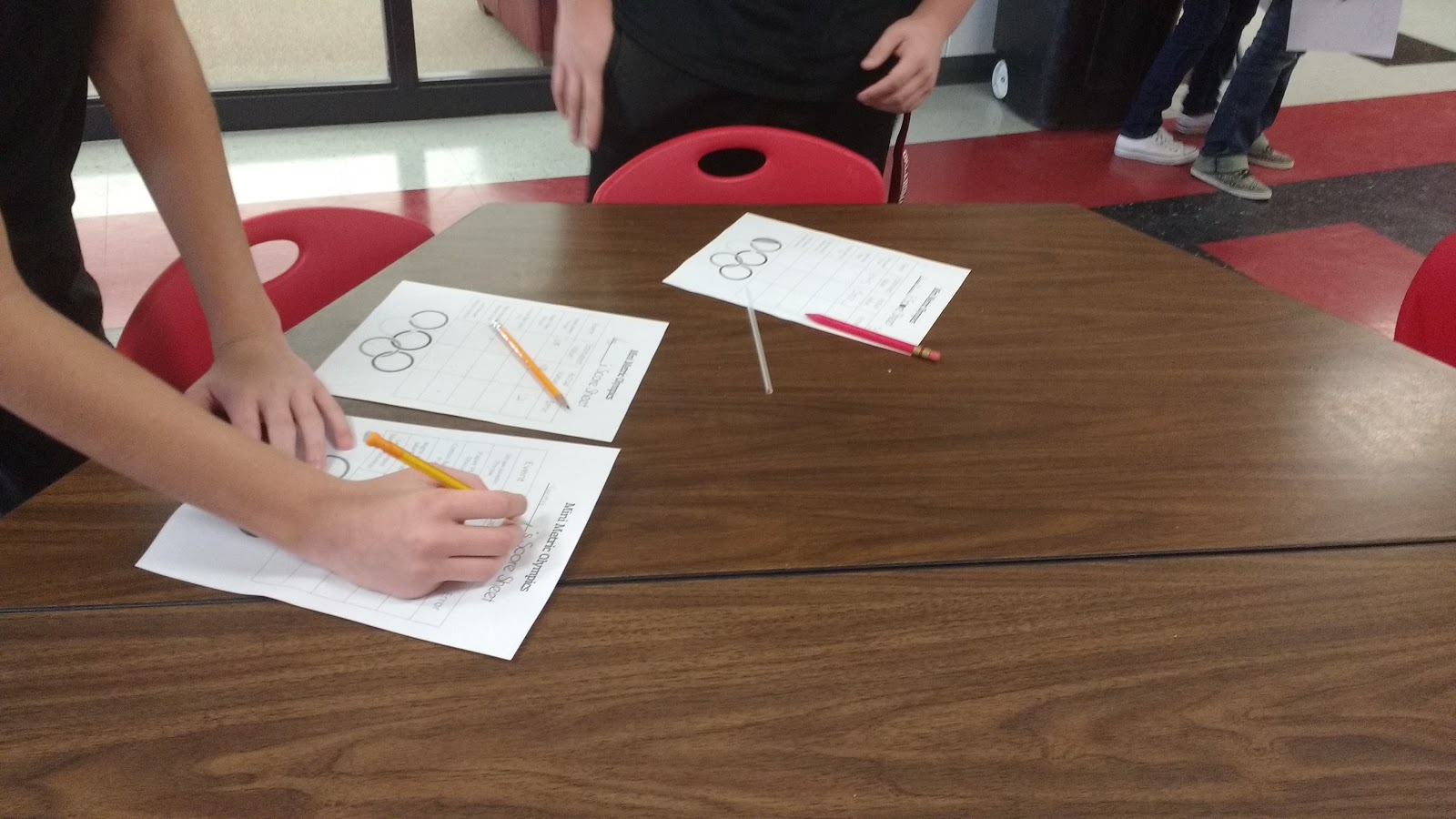
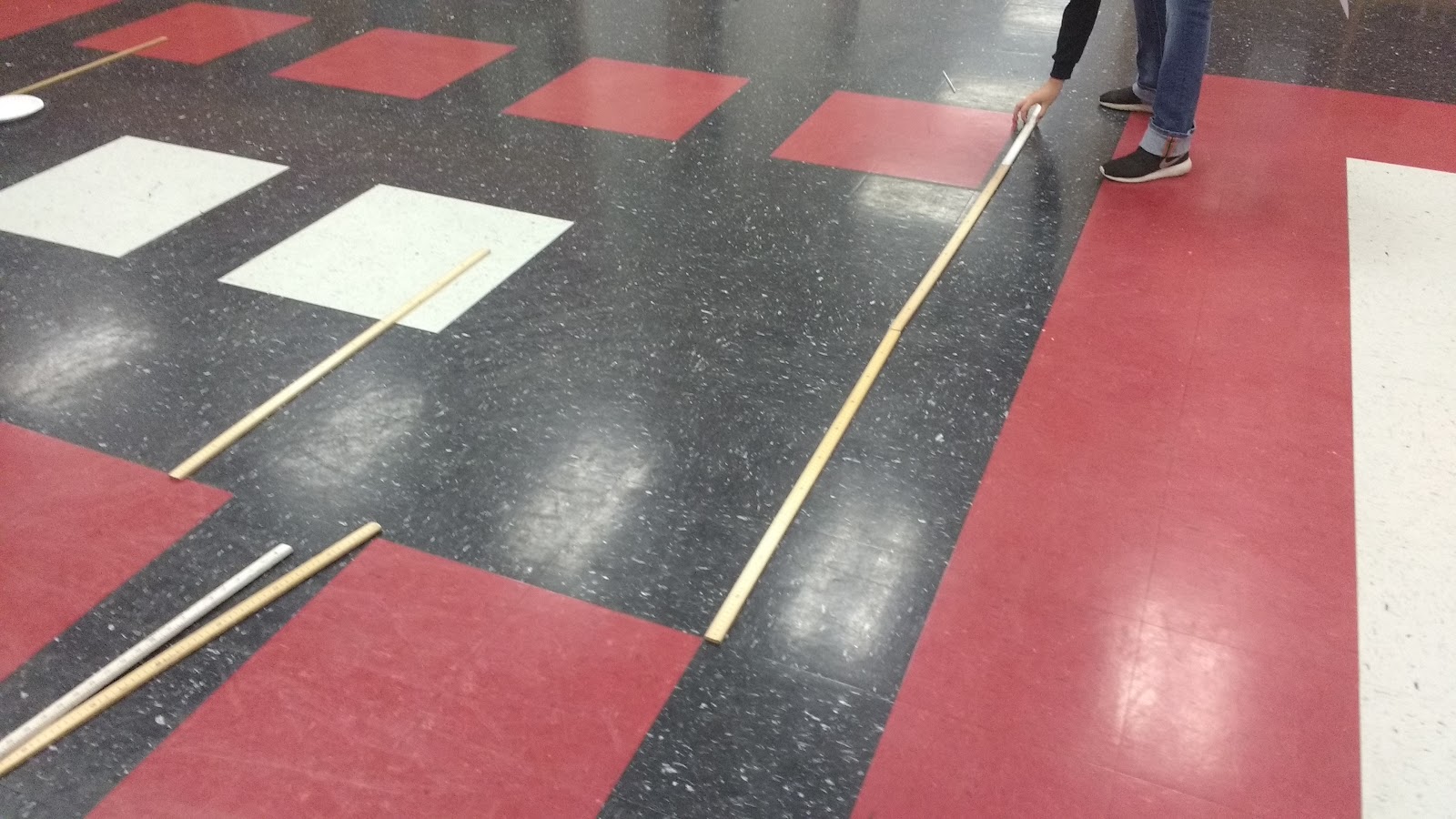
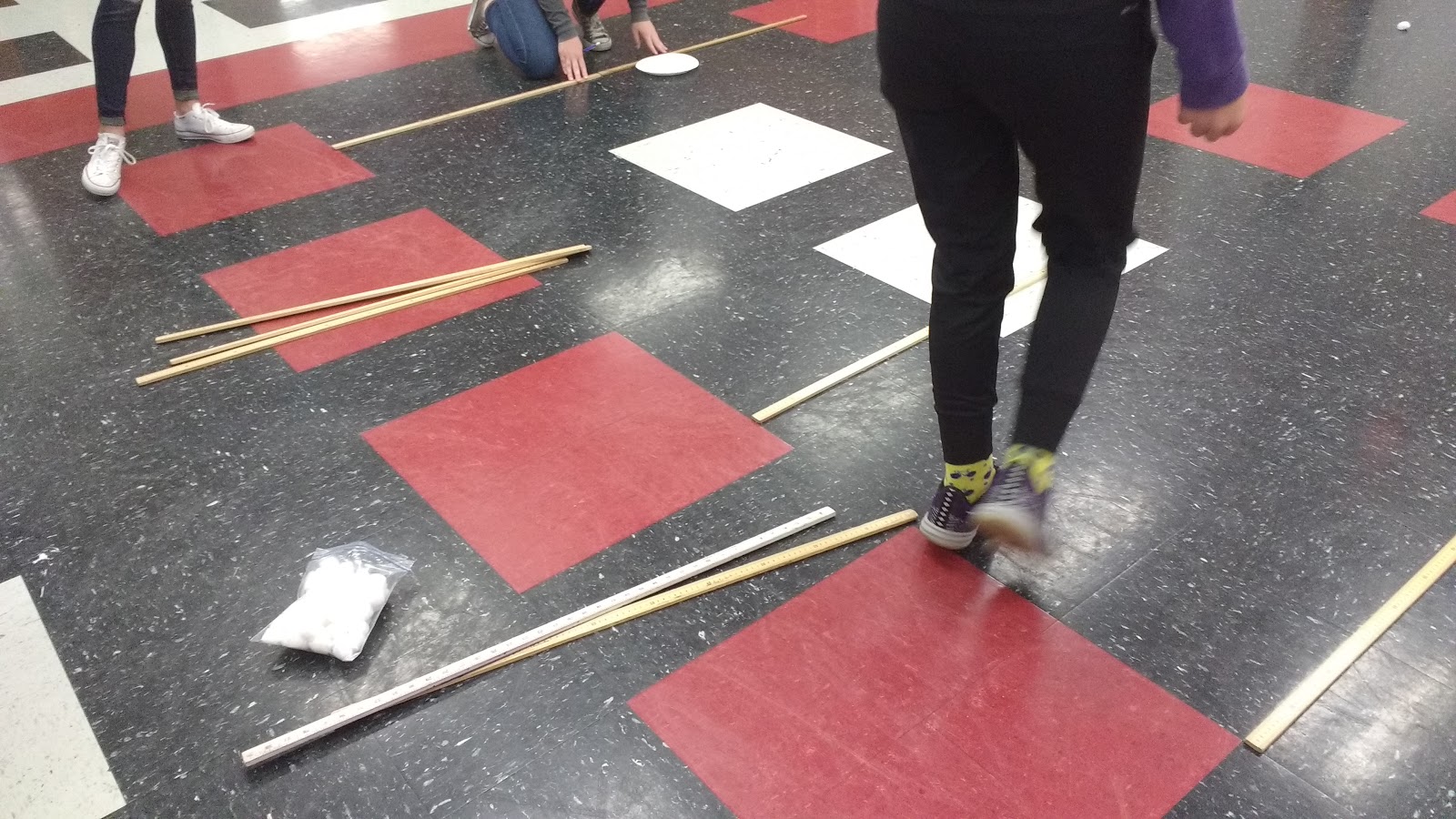
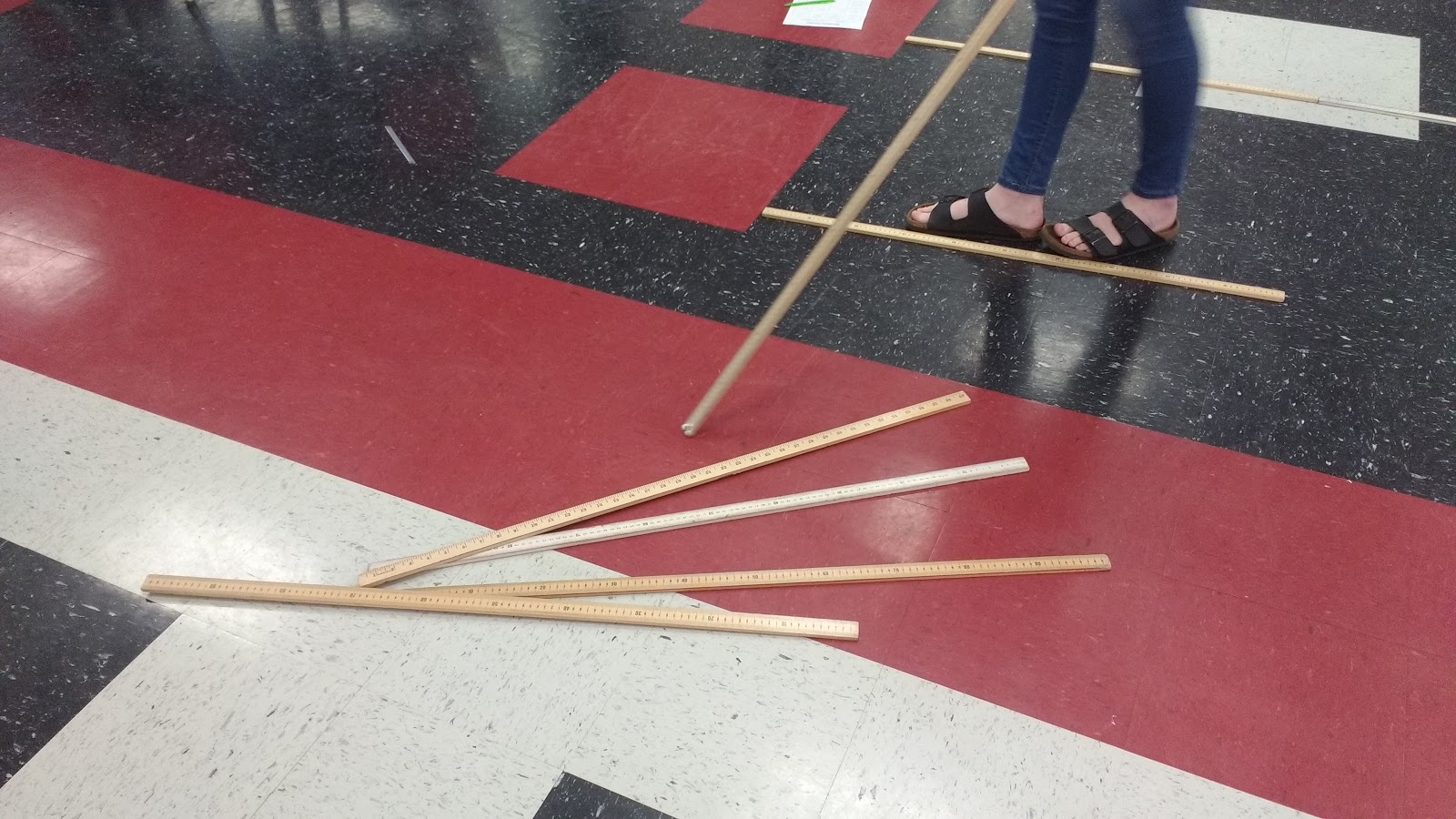
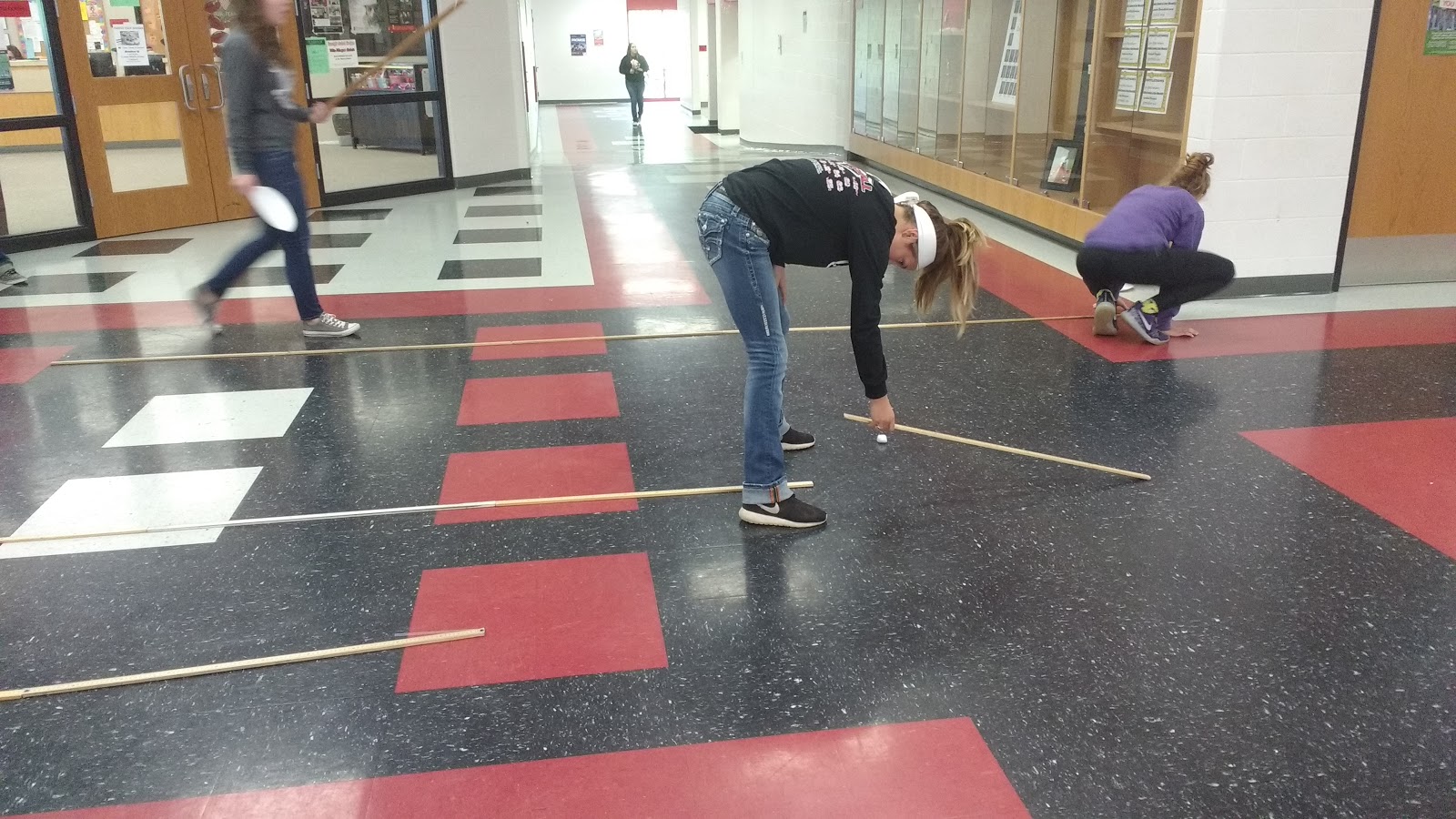
After the measurements were all taken, we calculated our error for each event. One student insisted that she would do better if we calculated percent error instead, so we did that too to check and see if she was right. In the future, I think I would add a “percent error” column to the score tracking sheet.
Having run through this activity once, there’s another big change I would make to it in the future. The way it is written, a student does an event, estimates the measurement, and then measures the actual value (mass, volume, or distance). I don’t want to say my students are not the most honest, but some of them seemed to have almost no error throughout the activity.
To keep them more honest in the future, I would like to give them the score tracking sheets and have them make ALL of their estimates before they did anything else. How far do you think you are going to be able to throw a straw? How far do you think you are going to be able to throw a cotton ball? I think this would spice things up a bit, too. The objects this activity uses are pretty hard to throw, but students might not realize that when they are making their estimates!
Mini Metric Olympics Files
Click here to SAVE the file to your device.
Mini Metric Olympics (PDF)
2802 saves – 283.29 KB
The fonts are Wellfleet and Caviar Dreams.

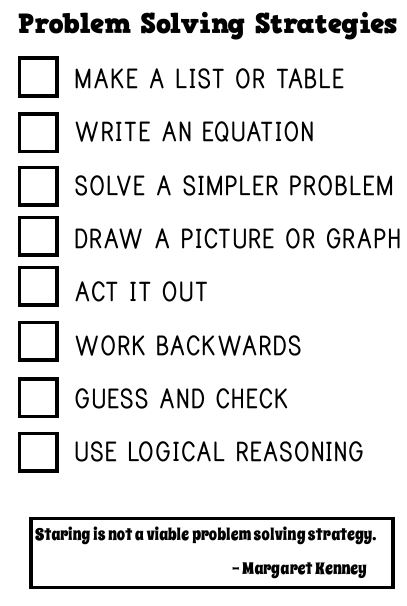
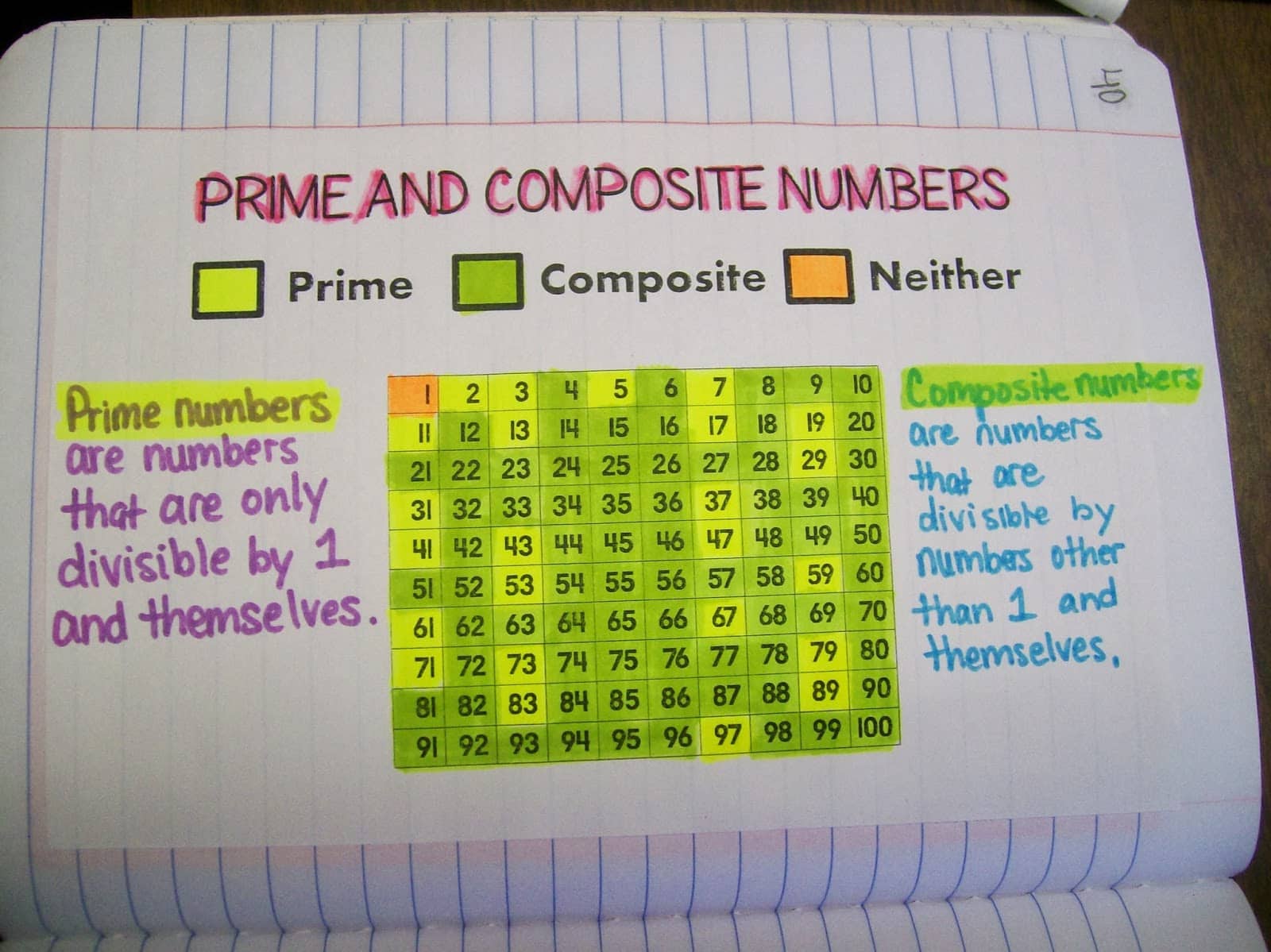
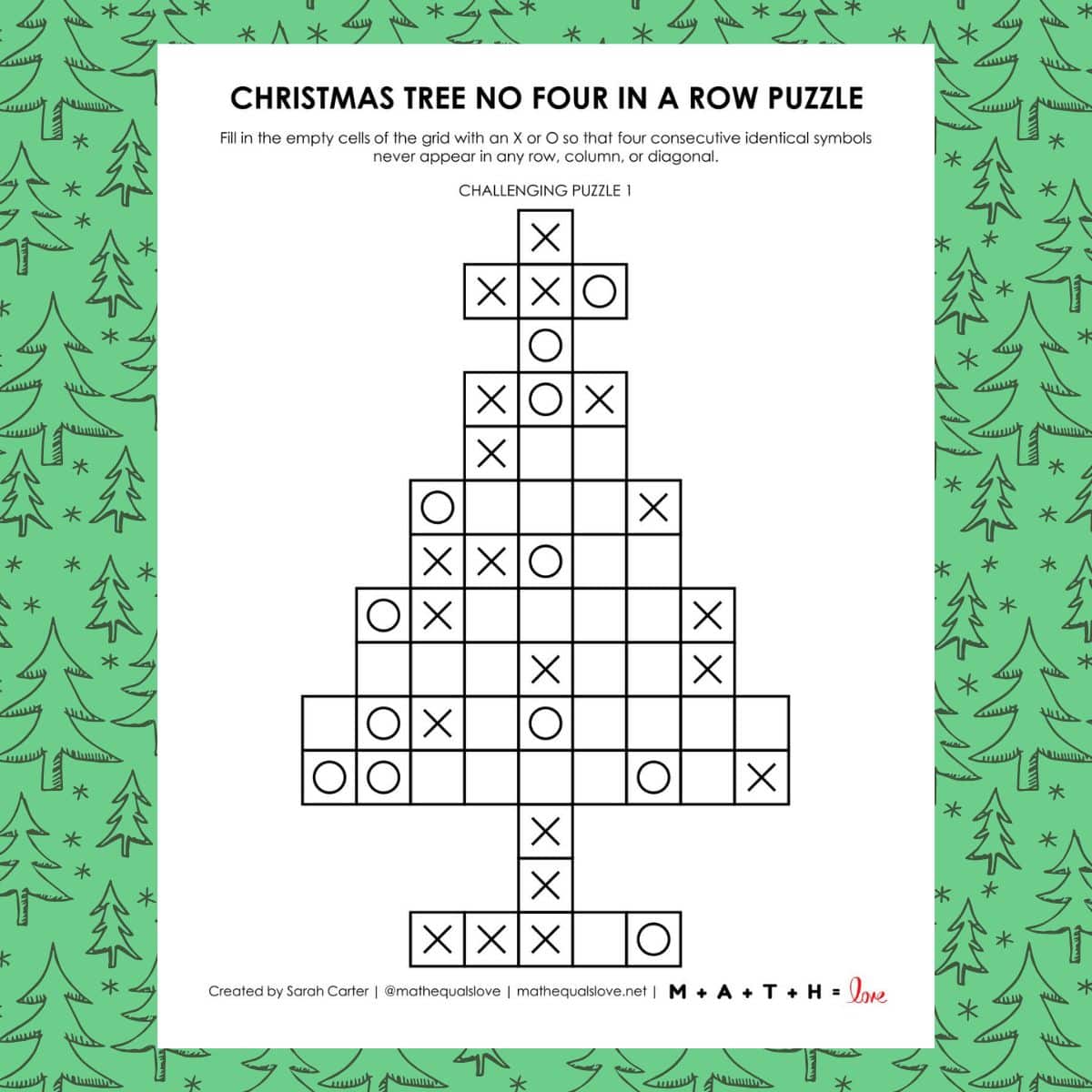
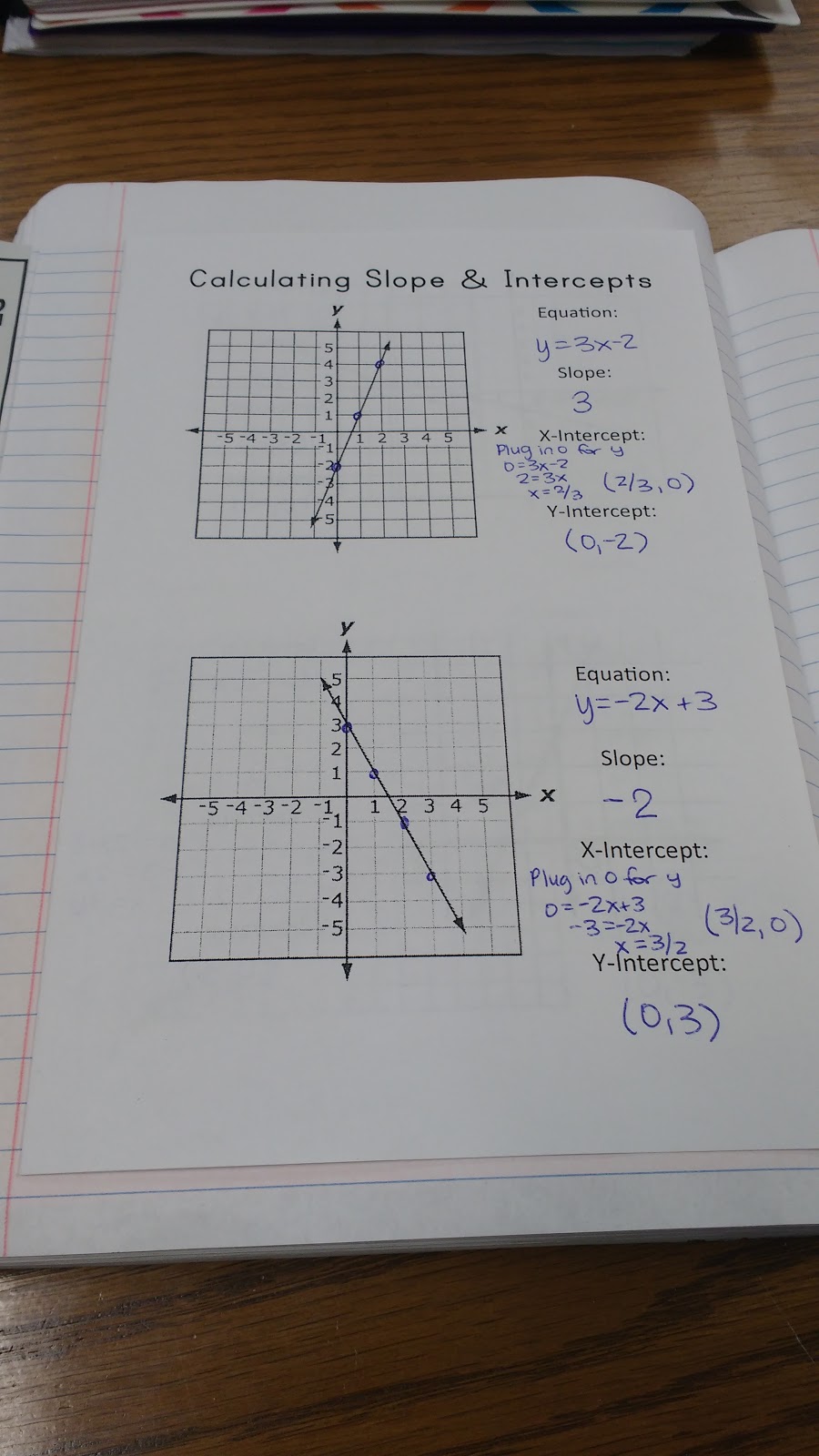
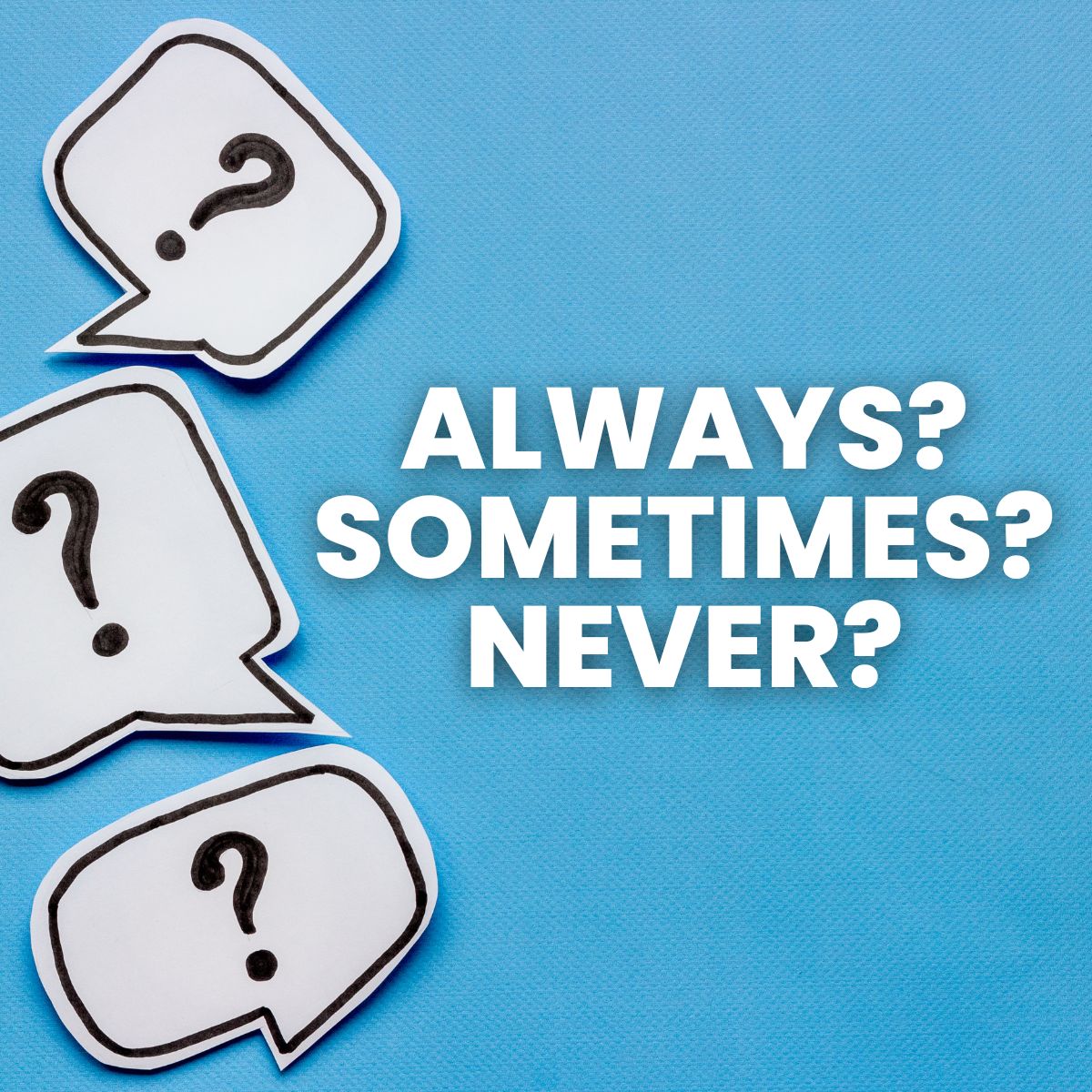
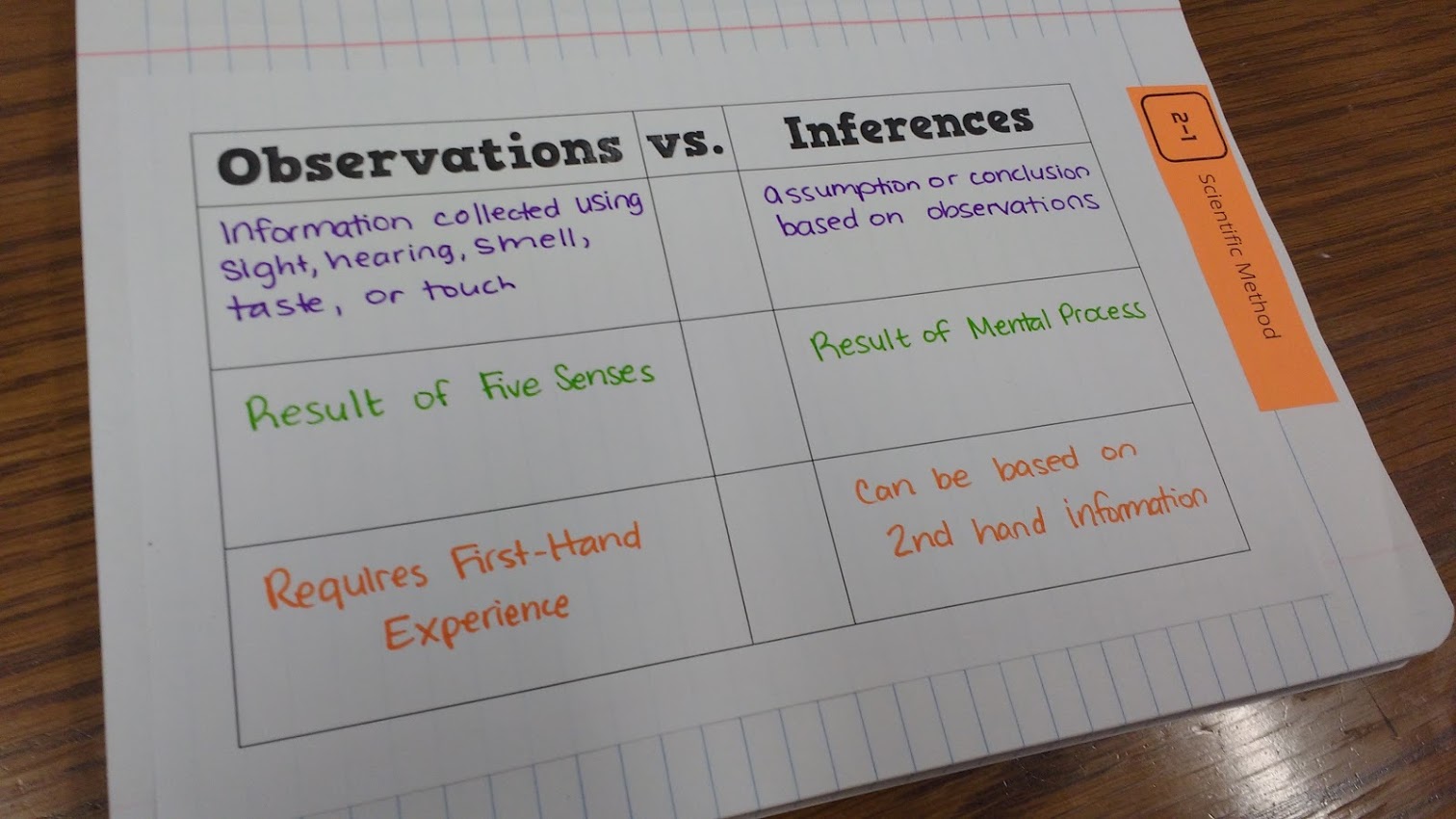
I loved doing this at the beginning of the year for my Chem students to introduce the metric system. Not only do they need to to measure accurately, but they need to start understanding what the values actualy mean. Is 200mL a lot, or a little? I started the activity as you (Sarah) plan to do next time, having them predict the outcome before competing (creating the awareness of a lack of Metric understanding), and really played up the Olympic competition, not only for winning each event, but for being the most accurate with predictions. Anyone can access the files I used for this @ https://goo.gl/r68jAF . In particular, the Publisher file has medals for each event that you can customize and print. We had a medals ceremony and everything. There is also a spreadsheet showing how I tracked individual and team scores, if that floats your boat. *Note: My principal didn't let me use the rather ironic parent permission form because he didn't think they would get that it was a joke.
Hi, I was wondering if this really took 2 class periods or if it could be done in 1 40 minute class period?
If you reduced the number of “events,” I think you could do it in 1 class period.